WTM London Special Edition
Free Distribution
November 2025
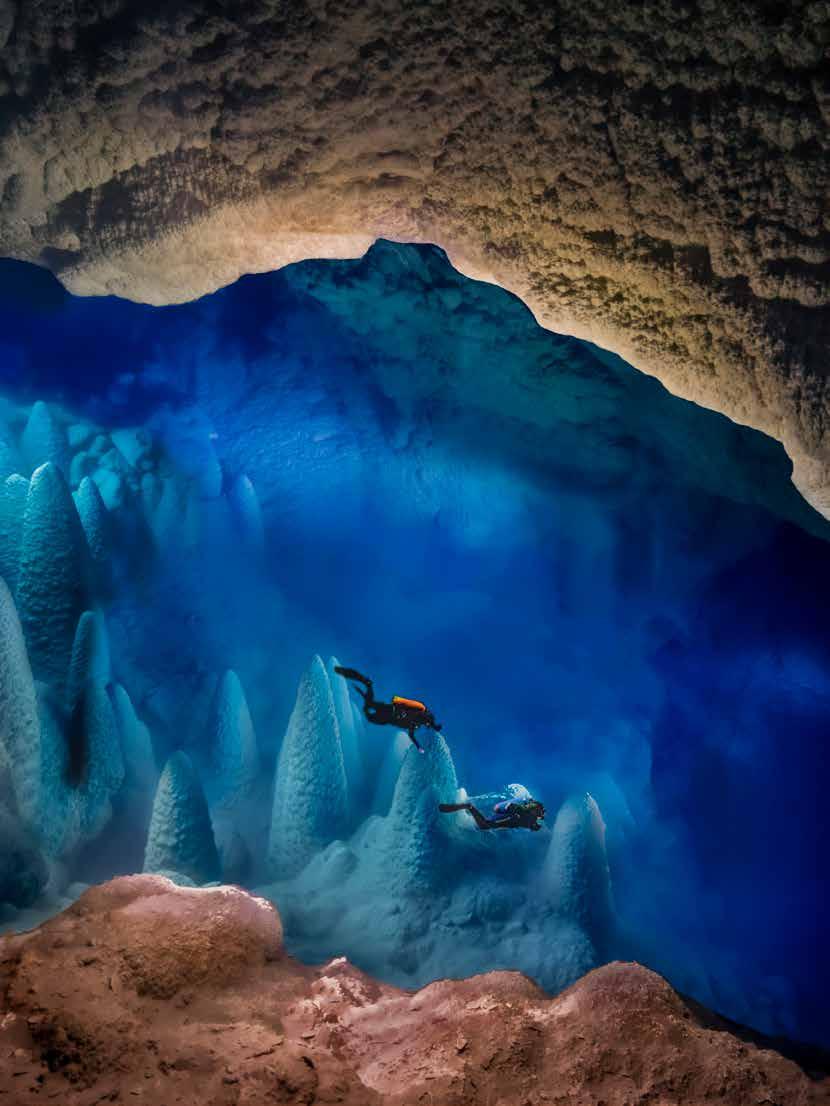

WTM London Special Edition
Free Distribution
November 2025

From golden beaches to winding rivers and stunning waterfalls, Brazil’s landscapes captivate at every glance

From giant peacock bass in the Amazon to marlins off the coast of Bahia, Brazil is emerging as a global leader in the segment
Explore the natural wonders of Mato Grosso and Mato Grosso do Sul - two destinations you simply can’t miss

If you’re a seasoned REMOTER, you already know and love Mato Grosso do Sul, our long-time partner and sponsor. This destination stands out as a place where responsible tourism truly comes alive.
Located in the Midwest region of Brazil, Mato Grosso do Sul is home to some of the country’s top ecotourism and adventure destinations. Here you can snorkel in crystal-clear waters, go cave diving, rappel into a deep abyss or from a high platform, hike along trails with refreshing waterfalls, enjoy tubing and arborism, ride horseback, and observe the region’s abundant wildlife on day and night photo safaris by land and water. All this, and much more, is possible in Mato Grosso do Sul, which proudly boasts globally recognized destinations like the Pantanal and the Bonito/Serra da Bodoquena region, considered benchmarks in ecotourism and adventure tourism.
Mato Grosso do Sul also pulses with culture, tradition, and deep respect for the communities that protect and share their land. Carefully managed ecotourism initiatives show how tourism and preservation can walk hand in hand, offering an inspiring model for the world. Visitors are not only invited to admire but also to participate in this commitment, carrying home the spirit of a destination where nature and culture thrive together. Here, nature isn’t just a backdrop, it’s the protagonist of a powerful story of conservation.
Let yourself be inspired by Mato Grosso do Sul!


Brazil is a country of continental dimensions and unique natural treasures that captivate visitors from all over the world. From the golden beaches of its coastline to the lush greens of the Amazon, passing through powerful rivers and awe-inspiring waterfalls, every corner of the country reveals landscapes that take your breath away and create memories that last a lifetime.
Beyond its exuberant nature, Brazil is celebrated for its cultural diversity. Historic cities such as Salvador and Ouro Preto showcase the nation’s colonial heritage and the blend of European, African, and Indigenous traditions, while modern urban centers like São Paulo and Rio de Janeiro offer a vibrant cultural scene, with theaters, museums, and internationally renowned events.
Brazil’s beaches rank among the most beautiful in the world, offering something for every type of traveler. For those seeking tranquility, there are serene coves lined with palm trees; for adventurers, perfect waves for surfing and water sports. The Brazilian coastline is also ideal for boat trips, diving, and exploring coral reefs and mangroves.
Adventure tourism and ecotourism are growing every year. Trails through the Atlantic Forest, excursions in Chapada Diamantina, rafting along the rivers of Serra do Rio do Rastro, and wildlife observation in the Amazon all provide authentic experiences in close contact with nature. Those who seek connection with the outdoors will find unforgettable refuges in national parks and nature reserves.
Brazil also boasts a modern and diverse tourism in -

PRESIDENT Roy Taylor
VICE-PRESIDENT Rosa Masgrau rosamasgrau@mercadoeeventos.com.br(55-21) 2254-3543
EDITORIAL DIRECTOR
Natália Strucchi natalia.strucchi@mercadoeeventos.com.br(55-21) 99164-2940
EDITOR Janaina Brito janaina.brito@mercadoeeventos.com.br (55-11) 98779-5732
SALES DIRECTOR Mari Masgrau mari.masgrau@mercadoeeventos.com.br(55-11) 97509-0605
ADMINISTRATIVE AND FINANCIAL DIRECTOR Roberta Saavedra roberta.saavedra@mercadoeeventos.com.br(55-21) 2487-1616
frastructure, ready to welcome travelers seeking luxury as well as those looking for more affordable experiences. The country offers an extensive network of hotels and guesthouses, efficient transportation between destinations, regional airports connected to major cities, and professional guides and local operators that ensure safety and comfort for every kind of visitor.
Brazilian cuisine is another irresistible invitation. Each region of the country has its own distinctive flavors, ranging from fresh seafood to traditional recipes with Indigenous, African, and Portuguese influences. Dishes such as feijoada, acarajé, and moqueca not only delight the palate but also tell stories of cultures that have blended for centuries.
Brazil is also a land of festivals and celebrations, famous worldwide for their contagious energy. Carnival, for instance, is celebrated with grand parades and music that moves entire crowds, while regional festivities like Bumba Meu Boi in Maranhão or the Festa Junina in the Northeast showcase folk traditions and dances that enchant visitors of all ages.
Traveling to Brazil is an open invitation to a universe of colors, flavors, sounds, and experiences. Each destination has its own charm, each city tells a story, and each landscape impresses with its grandeur. Whether you are passionate about adventure, culture, or relaxation, Brazil welcomes you with open arms to offer experiences that can only be lived here - a country where natural beauty, cultural diversity, and tourism infrastructure come together in perfect harmony.
OPERATIONAL
Andreia Boccalini andreia.boccalini@mercadoeeventos.com.br(55-11) 95389-7662
REPORTAGE
Ana Azevedo ana.azevedo@mercadoeeventos.com.br Rafael Torres rafael.torres@mercadoeeventos.com.br Giulia Jardim giulia.jardim@mercadoeeventos.com.br Beatriz do Vale beatriz.vale@mercadoeeventos.com.br Felipe Abílio felipe.abilio@mercadoeeventos.com.br
DESIGNER
Patrick Peixoto
SOCIAL MEDIA
Matheus Bueno
REPORTAGE SP (55-11) 97863-2020 | REPORTAGE RJ (55-21) 99164-2940
READER SERVICE (55-11) 95389-7662
IT INFRASTRUCTURE MANAGEMENT WorkNet Tecnologia fernando.carilo@worknetecnologia.com.br
WA AGENCY
Agência WA (https://waagenciadigital.com.br)
SALES DEPARTAMENT (55-11) 95389-7662
Rua 24 de Maio, 276 - 3º andar - República, São Paulo - SP, 01041-000
COMMERCIAL REPRESENTATIVE IN THE UNITED STATES
Juliana Costa juliana.costa@mercadoeeventos.com.br+1 (850) 225-9376
Published by Editora Mercado e Eventos Ltda
The articles and opinions of third parties published in the issue do not necessarily reflect the position of the newspaper.










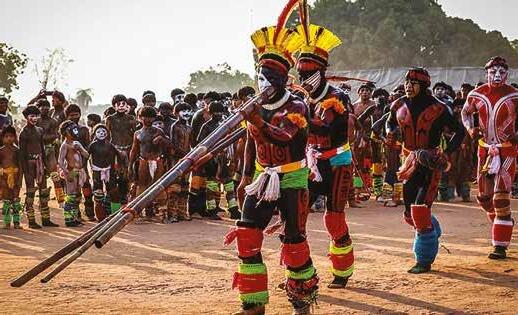
awaits you in


Welcome to Mato Grosso! Experience one place, countless destinations Here, you´ll be amazed by the natural diversity of the Pantanal, the Amazon, the Brazilian Savanna and the Araguaia. Enjoy various options in ecotourism, photographic safaris, adventure, birdwatching, sport fishing, ethnotourism, mystic and esoteric tourism, with all the structure and comfort you need For business or leisure, discover this paradise in the heart of Brazil.
GENERAL INFORMATIONS
OVERVIEW BRAZIL - 23
DISCOVER BRAZIL - 24
SPORT FISHING - 30
CULTURE - 34
INTERVIEWS
MARCELO FREIXO (EMBRATUR) - 26
BRUNO REIS (EMBRATUR) - 27
DISTRITO FEDERAL - 36
MATO GROSSO - 38
MATO GROSSO DO SUL - 40
NORTHEAST
ALAGOAS - 42
PARAÍBA - 44
RIO GRANDE DO NORTE - 46
PERNAMBUCO - 48
BAHIA - 49
CEARÁ - 50
MARANHÃO - 52

SÃO PAULO - 54
RIO DE JANEIRO - 56
MINAS GERAIS - 57
PARANÁ - 58
SANTA CATARINA - 60
RIO GRANDE DO SUL - 62
MATO GROSSO DO SUL - 7
MATO GROSSO - 15
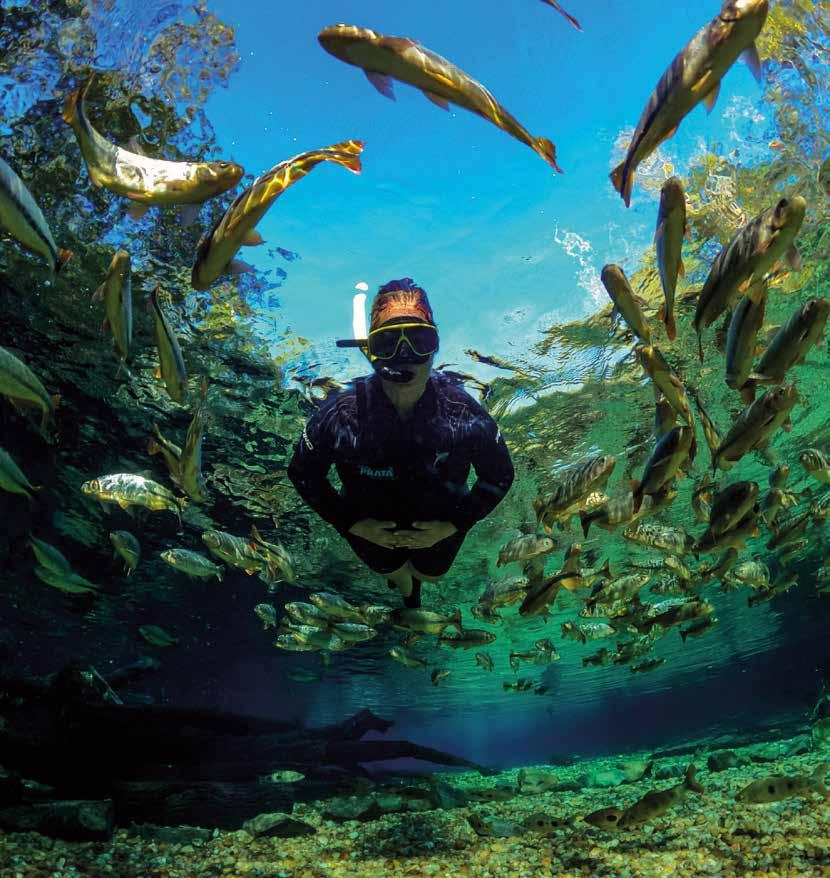
You can practice snorkeling in crystal-clear waters, cave diving, rappelling in a deep abyss or on a high platform, hiking on trails with waterfall baths, tubing, arborism, horseback riding, as well as observe our rich wildlife on day and night photo safaris both by
land and water. All this, and much more, is possible in Mato Grosso do Sul, which boasts globally recognized destinations like the Pantanal and Bonito/Serra da Bodoquena region, considered benchmarks in ecotourism and adventure tourism.
The Bonito/Serra da Bodoquena tourist region, located in the southwestern portion of Mato Grosso do Sul, is the main destination for adventure and ecotourism in Brazil. Voted the best ecotourism destination in the country 18 times, Bonito is also the World’s First Ecotourism Destination with Carbon-Neutral Certification. The attractions are numerous in the BonitoSerra da Bodoquena Tourist Region, which is composed of the municipalities of Bonito, Jardim, and Bodoquena. The main gateway to these destinations, by air, is the city of Bonito, which
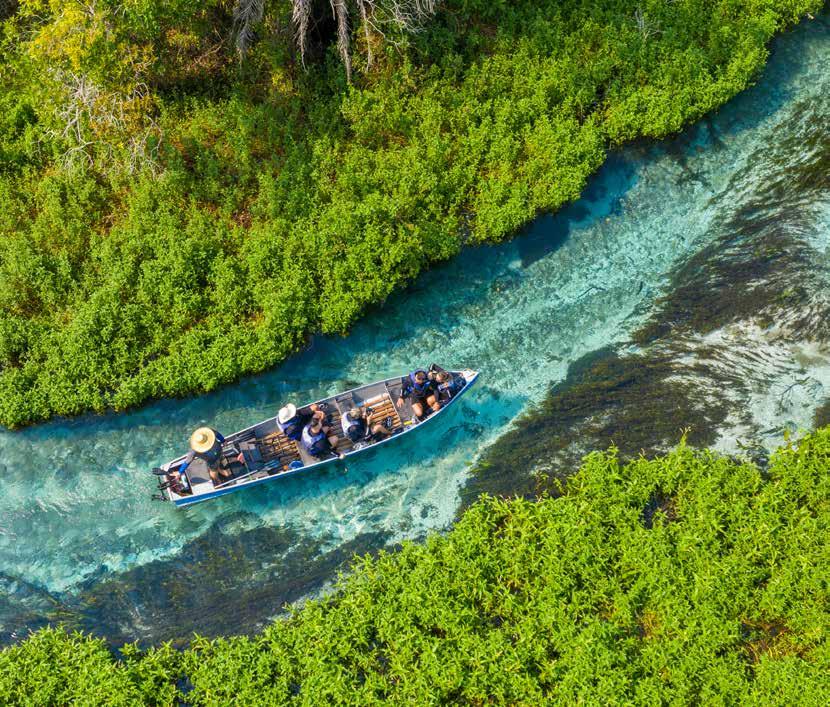
receives direct flights from Congonhas (CGH), Viracopos (VCP), and now also Guarulhos (GRU), the largest airport in Latin America.
Ground access from Campo Grande, the state capital, is 245 km via a fully paved highway.
Bonito/Serra da Bodoquena is world-renowned for its incredibly crystal-clear waters, mysterious caves and grottoes, and countless waterfalls. Among its main attractions, in the municipality of Bonito, is the Anhumas Abyss, with an exciting rappel descent of over 70 meters in suspension up to a stunning lagoon at the bottom of the abyss where you can snorkel or admire rock formations from a boat, or even practice certified scuba diving or as a novice.
Visiting the Blue Lake Cave (Gruta do Lago Azul), whose name refers to the incredibly transparent and blue lake located at its bottom, is an unforgettable experience, as well as visiting other grottoes in the region, known for their curious rock formations (speleothems) meticulously sculpted by nature over hundreds of thousands of years.
In the region, you can also explore the Mysterious Lagoon (Lagoa Misteriosa) with astonishingly clear waters and unknown depth, with visibility exceeding 40 meters, offering snorkeling and diving tours in a submerged cave. This attraction is located in the municipality of Jardim, which also hosts other activities, including the Macaw’s Hole (Buraco das Araras), the lar gest doline in South America, visited by ecotou rists and birdwatchers from around the world.
In the municipality of Bodoquena, which is also rich in attractions with crystal-clear waters, the main challenge is the Jaguar’s Mouth (Boca da Onça) Ecotour, with 90-meter rappelling descent in total suspension, overlooking the beautiful Sa lobra River Canyon below.
In the Bonito/Serra da Bodoquena region you can also enjoy the rivers Prata, Formoso, and Sucuri, with many waterfalls and some of the world’s clearest springs, as well as rapids ideal for activities such as kayaking and stand-up pad dleboarding, tubing, ziplining, and hiking through riparian forests.
The region offers many hotels, inns, besides international-quality resorts, with diverse tou rism support infrastructure regarding food, and adventure with security and guides specialized in natural attractions.
Another highlight is the regional cuisine, fea turing red meats, fish, and even caiman in de licious exclusive recipes. These mouthwatering options will certainly make your trip even more unforgettable.



About 67% of the world’s largest floodplain is located in the state of Mato Grosso do Sul. The Pantanal is a paradise for ecotourism enthusiasts and a crucial area for environmental balance. The biome is home to over 260 fish species, 650 bird species, 50 mammal species, 40 amphibian species, and over 50 reptile species, which make the biome is one of the world’s largest wildlife sanctuaries. Large mammals like jaguars, tapirs, marsh deer, and howler monkeys, reptiles like the Pantanal caiman, and hundreds of bird species like storks, blue, red, and yellow macaws, and species exclusive to the region attract visitors from all over the world.
Due to its extensive territory and diverse geography, the Pantanal can be visited year-round.
Each season offers distinct opportunities for unforgettable trips.
On land, the Pantanal can be experienced in farm hotels and rural inns, some of which are century old, mainly located in the municipalities of Corumbá, Miranda, and Aquidauana. These offer programs such as day and night wildlife safaris, river cruises, horseback riding, ecological trails, birdwatching, experiencing the culture of the Pantanal cattleman, and much more.
By water, ecological river cruises on the Paraguay River are unforgettable attractions for families seeking contemplative experiences and sport fishing enthusiasts (catch and release), with options for first-class hotel boats. For sport
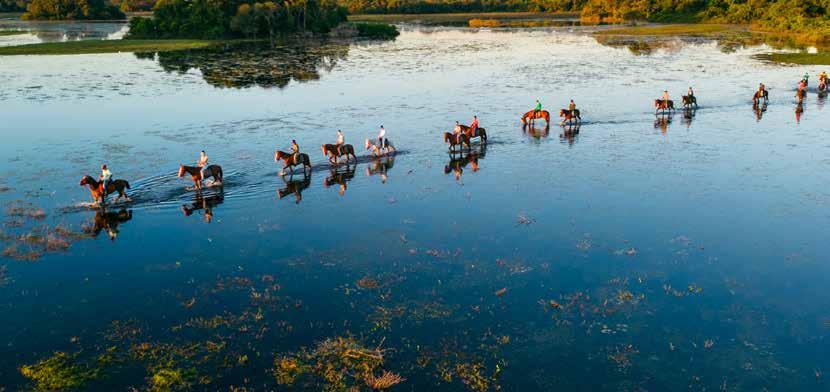
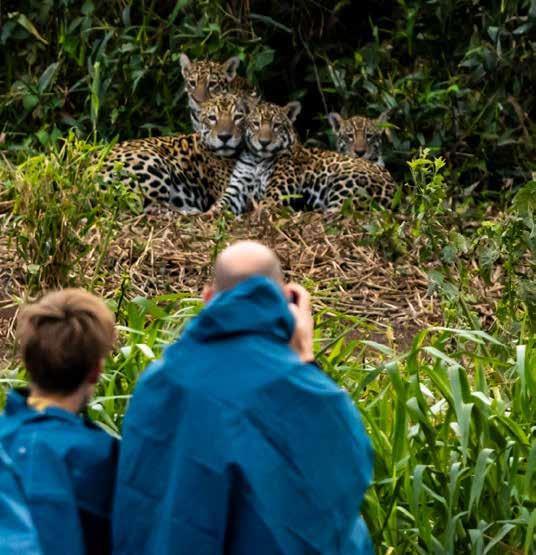
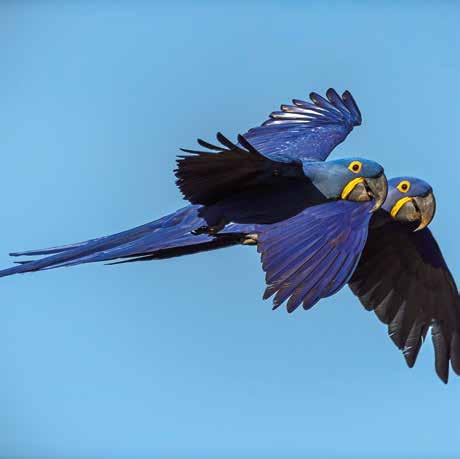
fishing enthusiasts, both the Paraná River Basin and the Pantanal offer a great diversity of highly sporting fish, along with extensive infrastructure to welcome anglers and provide an incredible fishing experience.
Another must-visit region is the Pantanal Park Road (Estrada Parque Pantanal), which attracts tourists from around the world for wildlife observation, especially birdwatching, along its route by foot or in specially adapted vehicles.
Along its route, there are several farm hotels specially designed to accommodate ecotourists and sport fishers, as well as horseback riding and river cruises on the Miranda River.
The Pantanal is not only incredible for its lush nature but also for the opportunity to learn about and experience its traditions, culture, and especially its delicious cuisine through the Pantanalian Gastronomic Routes, with flavors that will remain in visitors’ memories forever.
The capital of Mato Grosso do Sul, Campo Grande, is a modern city with much to offer, such as the Bioparque Pantanal (Biopark Pantanal), the world’s largest freshwater aquarium. A globally recognized attraction, it houses over 300 fish species from all continents in a gigantic structure that also includes a research and study center. The Bioparque is located in the Parque das Nações Indígenas (Indigenous Nations Park), one of Brazil’s largest urban parks, where the Helena Meirelles Acoustic Shell, the Museum of Contemporary Art (Marco), and the Museum of Cultures Dom Bosco can also be found.
Other recommended tours in the capital include the Casa do Artesão (Craftsman House) and Mercadão Municipal (Traditional Municipal Market), where you can find an indigenous fair and regional products ranging from handicrafts to spices and the typical mate herb used to prepare the most typical cold drink of Mato Grosso do Sul: the tereré. For those who want to savor another local exclusivity, the famous caiman pastry is also a must-try. The Feira Central (Central Fair) is another place that is part of Campo Grande’s identity, resulting from the mix of people from all regions of Brazil and other nationalities such as Paraguayans, Bolivians, Lebanese, and Japane -
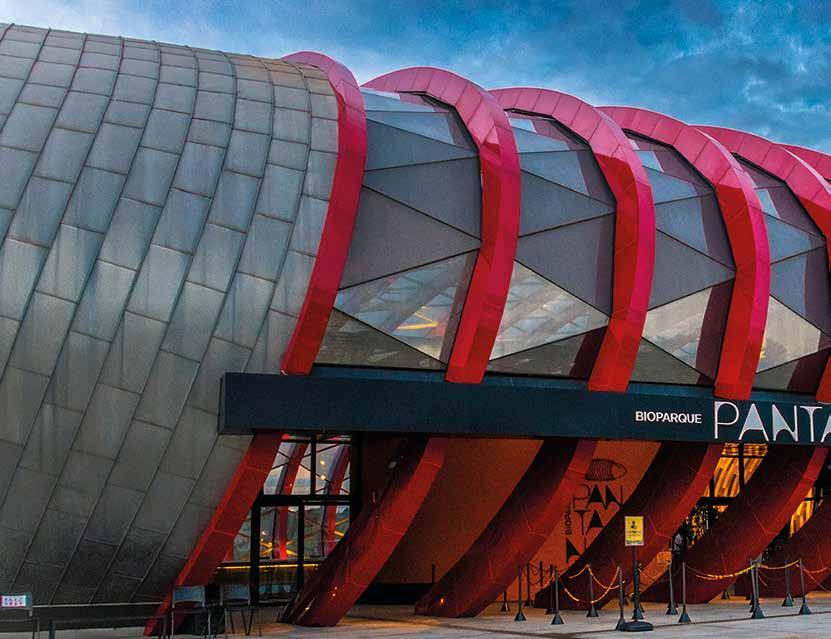
se, among others. The Feira Central is our oldest and most traditional gastronomic corridor, where you can taste a variety of flavors, such as the Sobá, a Japanese-origin dish declared Cultural and Immaterial Heritage of Campo Grande. The location also hosts culinary and cultural festivals throughout the year and more than 100 commer -
cial establishments selling everything from regional items to electronic products.
The capital is not left out of adventure. The Campo Grande dos Ipês tourist region also offers trails, rappelling, canyoning, bike tourism, rural tourism, waterfall baths, and various nature activities.
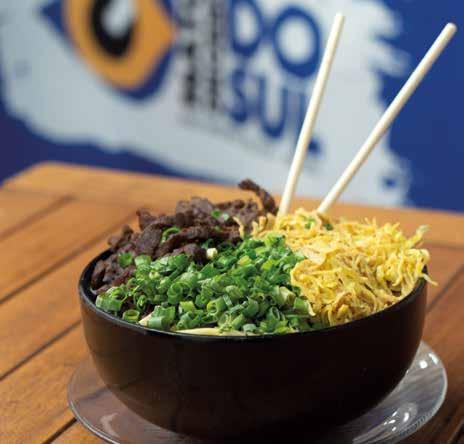



Located in the northern region of Mato Grosso do Sul, it is considered a transition area between Cerrado and Pantanal, with flora and fauna typical of both Brazilian biomes, but with the Central Plateau relief, such as ‘chapadas’, beautiful canyons, and many waterfalls spread throughout the region. The main cities in the region are: Rio Verde de Mato Grosso, offering several options for resorts with beautiful waterfalls and rapids; Alcinópolis, which has beautiful sandstone formations full of rock inscriptions; Costa Rica, home to the Salto do Sucuriú Municipal Natural Park and the Cânion do Engano,
surrounded by beautiful waterfalls very close to the city; and Coxim, an important sport fishing destination.
Mato Grosso do Sul caters to all types of travelers, including couples, families with children, 60+, young people, LGBT+, sport fishers, birdwatchers, and adventurers. For all these reasons and more, it has become a sought-after destination for nature tourism and unique experiences. Take advantage of low-season periods in Brazil and offer attractive price packages!
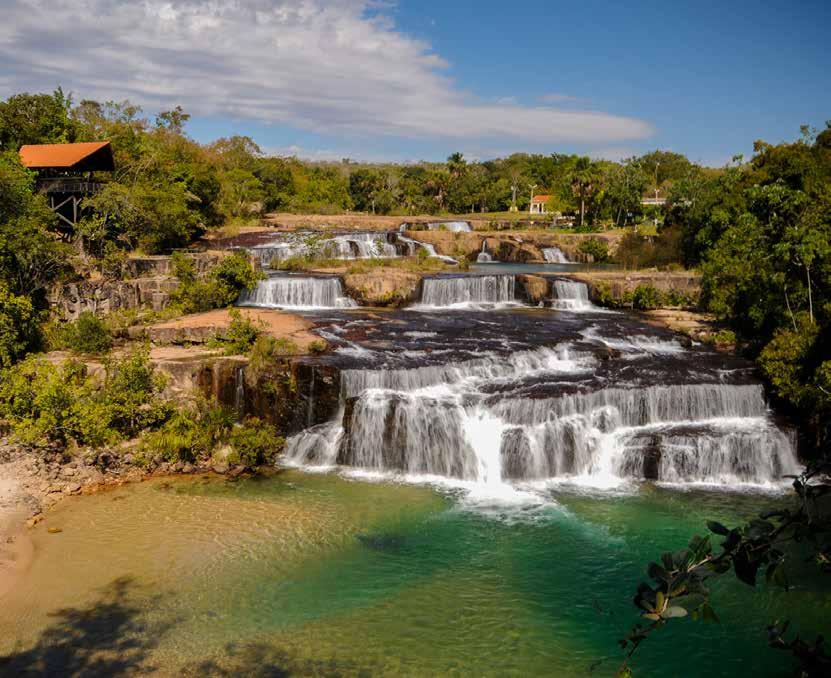
all of this awaits you!


Welcome to Mato Grosso, a state of rare and diverse wonders. With an approximate area of 903,207.050 km2 (IBGE,2020), which houses an estimated population of 3,567,234 people (IBGE, 2021), Mato Grosso is the third largest state in the country by area. It has a privileged location, in the Geodetic Center of South America, and borders Amazonas, Pará, Tocantins, Goiás, Bolivia, Rondônia, and Mato Grosso do Sul.
Its capital Cuiabá, one of the 141 municipalities in the state, is the gateway to local tourism and also the starting point for an amazing travel itinerary through the region.
In Mato Grosso, in addition to the Araguaia Valley, you will know three of the leading Brazilian biomes: Amazon, Pantanal, and Cerrado. Such
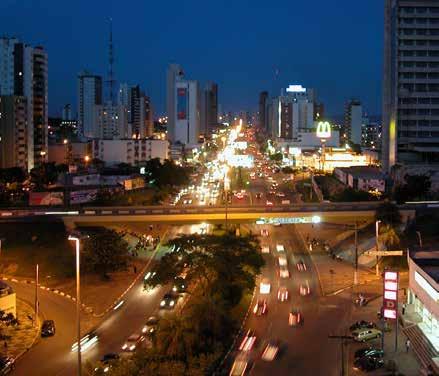
diversity makes this one of the few places on the planet with such natural wealth.
Besides excelling in the production of cotton, corn, soybeans, sunflowers, and cattle breeding, Mato Grosso is one of the largest freshwater reservoirs in the world. The state adopted the zero-tolerance policy for illegal deforestation, which helped ensure the protection of 62% of the territory and made it an example of balance, environmental preservation, and economic development.
Great not only in proportions, but in cultural diversity, Mato Grosso is the territory of many peoples, among them, the indigenous people, who were its first inhabitants, and those who established roots and here they met, mixed, and currently, combine traditions, habits, beliefs and unique customs that will move you.
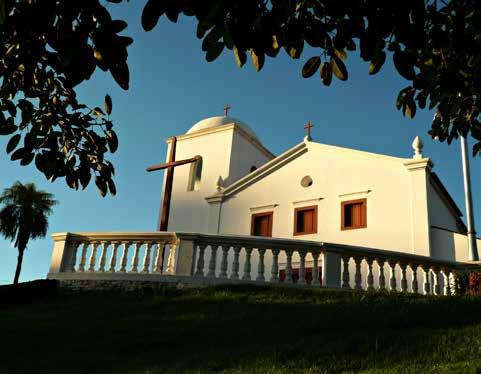
Get to know Mato Grosso The perfect destination to travel with family, friends, or even on Business.



The state capital, Cuiabá, with more than 300 years, is a historic city, surrounded by old mansions, churches, museums, and secular buildings, such as the Rio Museum and the old war Arsenal, today, Sesc Arsenal. In addition to having unparalleled points, such as the Caixa d’água Museum, the Casa do Artesão, the Palace of Instruction, and the Stone Museum.
On the streets of the capital, you can go on a gastronomic tour, get to know the historical center, and visit libraries and art galleries.
Cuiabá is a mixture of the traditional and the contemporary, of Bohemian and arousal.
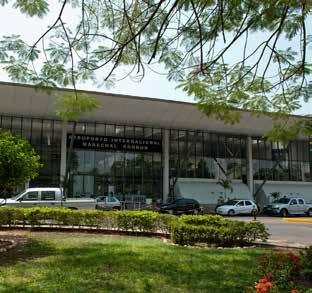
From this city, you can go to the four tourist poles of the state. This is where your journey through this paradise in central Brazil begins.
When crossing the Cuiabá River Bridge, leaving the capital, we find Várzea Grande, the second largest municipality in the state by population, where the Marechal Rondon International Airport is located.
Baptized as an industrial city, it has religiosity in its traditional festivals, as well as gastronomy, crafts, and tourist and cultural attractions.



The Pantanal has approximately 230.00 Km2, of which 40% is in Mato Grosso. In this biome, the rain cycle totally changes the landscape. In floods, animals seek high areas, and in the ebb, fish attract birds. This is when the nestlings appear and life hatches in the biome.
To get to know the Pantanal, it is essential to visit the Transpantaneira Park Road, one of the largest points of appreciation for wild animals, such as alligators, tapirs, tuiuiús, and their nests.
In this Mato Grosso biome, you will have the opportunity to appreciate bays, rivers, corixos, and thousands of species of plants, animals, and birds. You will have unique experiences of observing flora, fauna, and wildlife such as the Jaguar.
One of the great differentials of the region is that most of the lodgings offer tours, whether by boat,
horseback, or adapted cars, which makes the stay very pleasant and interesting.
For more intimate contact with local culture and habits, it is essential to include the cultural manifestations of the Alto Pantanal in this itinerary. Here you can enjoy typical festivals, such as the masked dance and the Cavalhada, along with the sound of the Cururu instruments and the rhythm of the Siriri dance.
One of the most common activities in the Pantanal is sport fishing, that is because this pole is privileged with the diversity of fish, rivers, and affluents.
On your vacation, at your leisure, or for your amusement, enjoy all the beauty of the Mato Grosso Pantanal.



The Cerrado takes 38.29% of the territory of Mato Grosso and expands to the depressions from Upper Paraguay to the Parecis Plateau. Ideal for ecological tourism, this center is surrounded by landscapes that invite you to bathe in waterfalls, thermal waters as well as dive and float in crystalline waters. All of this is possible because Mato Grosso is one of the states that has one of the largest volumes of fresh water in the world, with numerous waterfalls, canyons, valleys, and waterfalls.
For those who seek adventure, it is possible to practice rappelling, rafting, buoy cross, tree climbing, river sup, ducking, zip lining, and highline, as well as hikes that lead to viewpoints, caves, and much more.
The Cerrado also provides coexistence with Quilombola communities and indigenous peoples in environments full of culture, where you will experience rites, dances, and the unique gastronomy of the region.

You will find natural scenery, museums, historic churches, and restaurants with the delights of local cuisine, ideal for leisure time.
To relax and enjoy the scenery, sport fishing is another good option. And you don’t even have to go that far. From inns to health resorts, from the capital, it is possible to reach several structured areas for this activity.
And, for those who come to work, this region is prepared to welcome you. The Mato Grosso Cerrado has hotel infrastructure as well as space for events and entertainment.


The Cerrado is also attractive, for its mystical and energetic power, possessing a combination of fantastic stories of extraterrestrials, and locations known for their archaeological sites and cave paintings. Mato Grosso is full of mysteries!
Get to know all of these paradises. Discover the Mato Grosso Cerrado and its emotions.


The Amazon has an approximate area of 5.1 million Km2, of which 550 Km2 are to the north of the Mato Grosso territory, with an extensive area composed of dense forests, immense rivers, and conservation areas. In this region, the Cristalino State Park, with 184 thousand hectares, is highlighted for housing more than 600 species of animals, birds, butterflies, reptiles, mammals, and also the rare white-faced spider monkey, the park’s symbol primate.
Traveling through the Mato Grosso Amazon is to disconnect from the hustle and bustle and live unforgettable experiences in places like the Xingu National Park and indigenous villages.
Another option is rural tourism, which presents a green economy, with small producers that welco-
me visitors who want to go hiking, to trails, and observe the Amazon fauna.
In the midst of so much nature, the Mato Grosso Amazon provides cozy environments with accommodations and restaurants. With auditoriums, specialized companies, and an airport, this region has the ideal infrastructure for holding business meetings and events.
When it comes to culture, the northern region of the state is highlighted by the Natural History Museum, the Recanto das Orquídeas nursery, and the Pedra Preta archaeological site. Not to mention the excitement of activities such as sport fishing in immense rivers, such as Teles Pires, and the sensation of seeing breathtaking waterfalls and rivers.
Visit this preserved refuge and discover that Mato Grosso goes far beyond what you can possibly imagine!
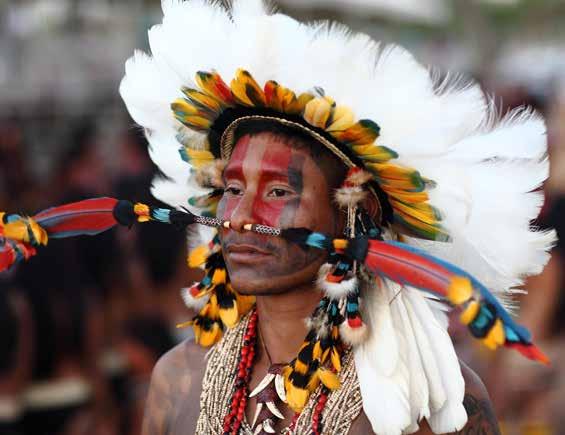
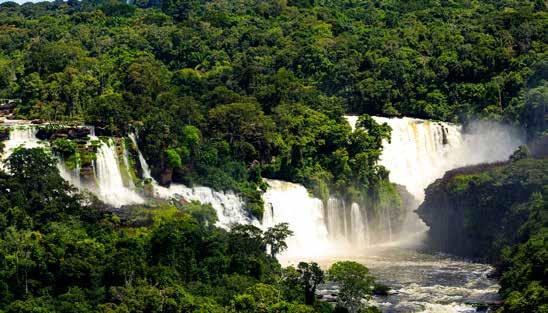
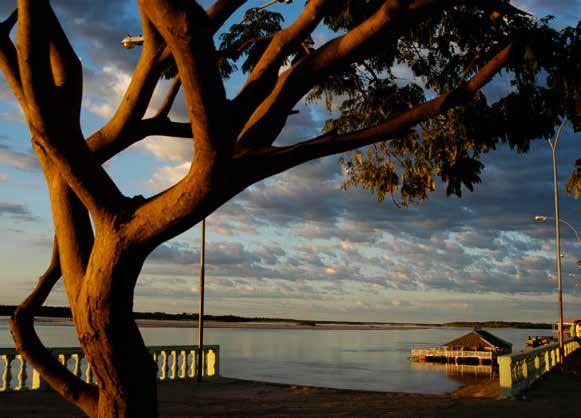

Due to the great Araguaia River, which has in all its extension about 2.115 Km2, the Araguaia Valley is one of the tourist centers of Mato Grosso that, for its rich fauna and beautiful natural landscapes, attracts people from all over Brazil who seek contact with nature and beautiful freshwater beaches.
In addition to being the destination of great beach festivals, Araguaia, for its wide variety of fish, such as Pirarucu, Pirarara, Piraíba (Baby Fish), Matrinxã, and Peacock Bass, is also the scene for sport fishing competitions. In the surroundings of the rivers, it is still possible to glimpse flocks of birds and animals such as the Amazon River dolphin.
When it comes to the cultural memory of the region, one of the main sights is the historical and
Cultural Museum, which contains an archaeological wing and ceramic pieces from the Old Cemetery of the Carajá people. As a matter of fact, in this region, it is possible to experience the traditions of ethnic groups, such as the Tapirapé, Txucarramãe, and Carajá.
Araguaia is a mixture of Legends and mysticism that attracts researchers, esotericists, and ufologists from all over the world. One of the characteristics of the region is the belief that there are portals to other dimensions. In Araguaia, there are many options for exciting tours.
With great touristic potential, Araguaia is host to several events, including events focused on ufology and even agribusiness. This region has great infrastructure in chains of hotels, inns, and restaurants, as well as an airport, which makes a direct connection with the state capital.
Connect with nature and the energies of Araguaia. Rediscover Mato Grosso and all its experiences!

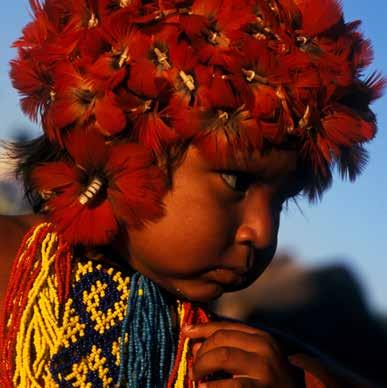




GENERAL INFORMATION
OFFICIAL NAME: Federative Republic of Brazil
SYSTEM OF GOVERNMENT: Federal Presidential Republic
PRESIDENT: Luiz Inácio Lula da Silva

PRESIDENT OF EMBRATUR (BRAZILIAN TOURISM BOARD): Marcelo Freixo
MINISTER OF TOURISM: Celso Sabino
OFFICIAL WEBSITES:
www.brasil.gov.br | www.turismo.gov.br
NORTH ACRE (RIO BRANCO) | AMAPÁ (MACAPÁ) | AMAZONAS (MANAUS) | PARÁ (BELÉM) | RONDÔNIA (PORTO VELHO) | RORAIMA (BOA VISTA) | TOCANTINS (PALMAS)
NORTHEAST ALAGOAS (MACEIÓ) | BAHIA (SALVADOR) | CEARÁ (FORTALEZA) | MARANHÃO (SÃO LUÍS) | PARAÍBA (JOÃO PESSOA) | PERNAMBUCO (RECIFE) | PIAUÍ (TERESINA) | RIO GRANDE DO NORTE (NATAL) | SERGIPE (ARACAJU)
MIDWEST GOIÁS (GOIÂNIA) | MATO GROSSO (CUIABÁ) | MATO GROSSO DO SUL (CAMPO GRANDE) | DISTRITO FEDERAL (BRASÍLIA)
SOUTHEAST ESPÍRITO SANTO (VITÓRIA) | MINAS GERAIS (BELO HORIZONTE) RIO DE JANEIRO (RIO DE JANEIRO) | SÃO PAULO (SÃO PAULO)
SOUTH PARANÁ (CURITIBA) | RIO GRANDE DO SUL (PORTO ALEGRE) | SANTA CATARINA (FLORIANÓPOLIS)
British citizens do not need a visa for tourist stays of up to 90 days in Brazil. However, the following documents are mandatory:
• A passport valid for at least six months from the date of entry.
• A return ticket or proof of onward travel.
Brazil, located in South America, covers an area of 8.516 million km² and has a population of approximately 214.3 million people. Its capital, Brasília, is a planned city inaugurated in 1960 that symbolizes the country’s modernity and growth.
Brazil is divided into five major regions: North, Northeast, Central-West, Southeast, and South, comprising 26 states and the Federal District, where the capital is located.
CLIMATE AND BEST TIME TO VISIT
Brazil’s continental size means that its climate varies greatly from region to region. Summer (December to March) is generally hot, while winter (June to August) can be cool, especially in the South. In the Northeast, the sun shines almost all year round.
CURRENCY AND COSTS
The local currency is the real (R$). It is advisable to carry a mix of cash and credit cards.
One British pound equals approximately R$7.20 (subject to variation).
SAFETY AND HEALTH
It is strongly recommended to have travel insurance that includes medical assistance coverage.
Portuguese is the official language of Brazil.
The country is renowned for its hospitality, music, gastronomy (be sure to try feijoada and acarajé), and iconic festivals such as Carnival.
Distances in Brazil can be vast; domestic flights are the best option for long journeys. In urban areas, use transportation apps such as Uber or licensed taxis for safety and convenience.
Brazil spans four time zones. The official time is Brasília Time (GMT -3).
The United Kingdom is typically four hours ahead of Brasília.
TELEPHONE AND COMMUNICATION
The international dialing code for Brazil is +55.
To call Brazil from abroad, dial your country’s international access code, followed by +55, the local area code, and the phone number.

Brazil arrives at WTM London 2025 with a strategic agenda led by the Brazilian Agency for International Tourism Promotion (Embratur). Under the leadership of President Marcelo Freixo, the agency introduces new global positioning initiatives, reinforcing the country’s presence among the world’s leading travel destinations.
“Our participation at WTM London this year marks a milestone in Brazil’s repositioning on the global tourism stage. We are debuting a completely redesigned stand - with a modern, functional design - created to maximize our visibility and business generation opportunities for the country,” says Freixo.
Among the highlights, Embratur is launching its international soft power campaign, designed to strengthen Brazil’s image abroad through its most defining elements: cultural diversity, hospitality, and natural wealth. “We celebrate the vastness of our culture and nature, the explosion of rhythms, colors, and flavors that shape our festivals and gastronomy,” adds the agency’s president.
Brazil’s participation also marks the beginning of an unprecedented partnership with Netflix, which will result in a travel guide inspired by audiovisual productions. The
project aims to transform the success of Netflix’s series and films into real-life itineraries and experiences across the country.
Another major announcement is the new ‘Sun & Beach’ module of the Brasil Travel Specialist platform, aimed at training and qualifying international agents and tour operators. In addition, Embratur will present the international launch of the Amazônia Brand, linked to the Integrated Amazon Routes (RAI) project, which promotes joint and sustainable tourism development across the Amazon region.
The United Kingdom is one of the priority markets in Plano de Marketing Brasis, which guides Embratur’s international actions.
“In 2024, the UK ranked as the 10th largest source of tourists to Brazil and the 5th in Europe. Our analysis shows that British travelers value authentic, exclusive, and sustainable experiences — attributes that Brazil delivers with excellence,” highlights Freixo.
The agency’s strategy will be driven by data intelligence, allowing it to identify opportunities and strengthen Brazil’s positioning within the European tourism market.
Embratur is leading a delegation of 52 co-exhibitors, representing destinations, inbound tour operators, airlines, hotels, and destination marketing organizations. Among them, seven are participating for the first time, reflecting the sector’s renewal and dynamism.
According to Freixo, WTM London plays a strategic role in Brazil’s international tourism promotion policy.
In 2024, the event generated over R$150 million in expected business and projected the arrival of more than 21,000 international visitors, with an estimated economic impact of US$15.3 million for Brazil’s economy.
BRUNO REIS HIGHLIGHTS
EMBRATUR’S CO-CREATIVE AND DATA-BASED APPROACH TO PROMOTING BRAZIL

Brazil’s latest international campaigns are guided by a simple but powerful principle: there’s no place like Brazil. According to Bruno Reis, Director of Marketing and Sustainability at Embratur, the core message remains consistent across markets, but each audience experiences it through a unique narrative lens.
“For travelers who already have memories of Brazil, we work with the concept of rediscovery,” he explains. “Under the umbrella theme ‘There’s No Place Like Brazil’, which we’ve used in our 2025 campaigns for Europe and Latin America, we tell stories that blend the familiar with the unexpected - a beloved beach with a historic quilombo, an ecological trail, a regional gastronomic circuit or a countryside festival. The creative focus is on ‘Rediscover Brazil from a New Perspective’.”
The agency’s marketing structure, he adds, is “data-driven from start to finish.” Embratur crosses market research, search trends, historical performance, OTA and operator insights, social listening and intelligence from the Visit Brasil platform to shape every decision.
“We turn this information into actionable dashboards that guide investment, segmentation, messaging and format. It’s not data for data’s sake - our team interprets
numbers and translates them into coordinated, efficient action. Every decision goes through that analytical filter, allowing us to personalize communication and react almost in real time to traveler behavior,” Reis says.
Co-creation with content creators, agencies and trade partners is also a core pillar of Embratur’s strategy. The agency conducts press trips with influencers from niches such as nature, culture, gastronomy and LGBTQIA+. “It’s not Embratur saying ‘visit Brazil’ unilaterally — it’s someone the audience already trusts saying, ‘I went, I felt it, and there truly is no place like Brazil’,” Reis notes. Campaigns are co-produced with local agencies, often in the cultural tone and language of the target audience. “We give our partners creative freedom to bring their own voice and accent, while Embratur ensures brand coherence and shared objectives. The result is authenticity, qualified reach and a complete funnel, from inspiration to conversion.”
In terms of media channels, Embratur adopts an omnichannel approach with strong emphasis on digital platforms, while still leveraging TV and out-of-home media when scale and visibility are needed. “Short videos are our engagement engine,” Reis says. “Interactive stories and live streams with influencers during trips to Brazil generate peaks of interest and high content sharing. Everything is measured and optimized based on KPIs for qualified reach and conversion.”
Sustainability, meanwhile, is more than a message: it’s a commitment. “It’s a key pillar of our positioning and a clear differentiator,” Reis stresses. “In our campaign with TripAdvisor, for instance, we linked Brazil’s promotion to a tree-planting program that offset CO2 emissions. We also compensate emissions from our press and fam trips, and we highlight low-impact, community-based experiences that connect nature, conservation and local income generation. Traveling to Brazil, therefore, means both enjoying and preserving.”
With this blend of creativity, technology and purpose, Brazil’s tourism narrative is evolving- and inviting the world to rediscover a country where every journey tells a deeper story.
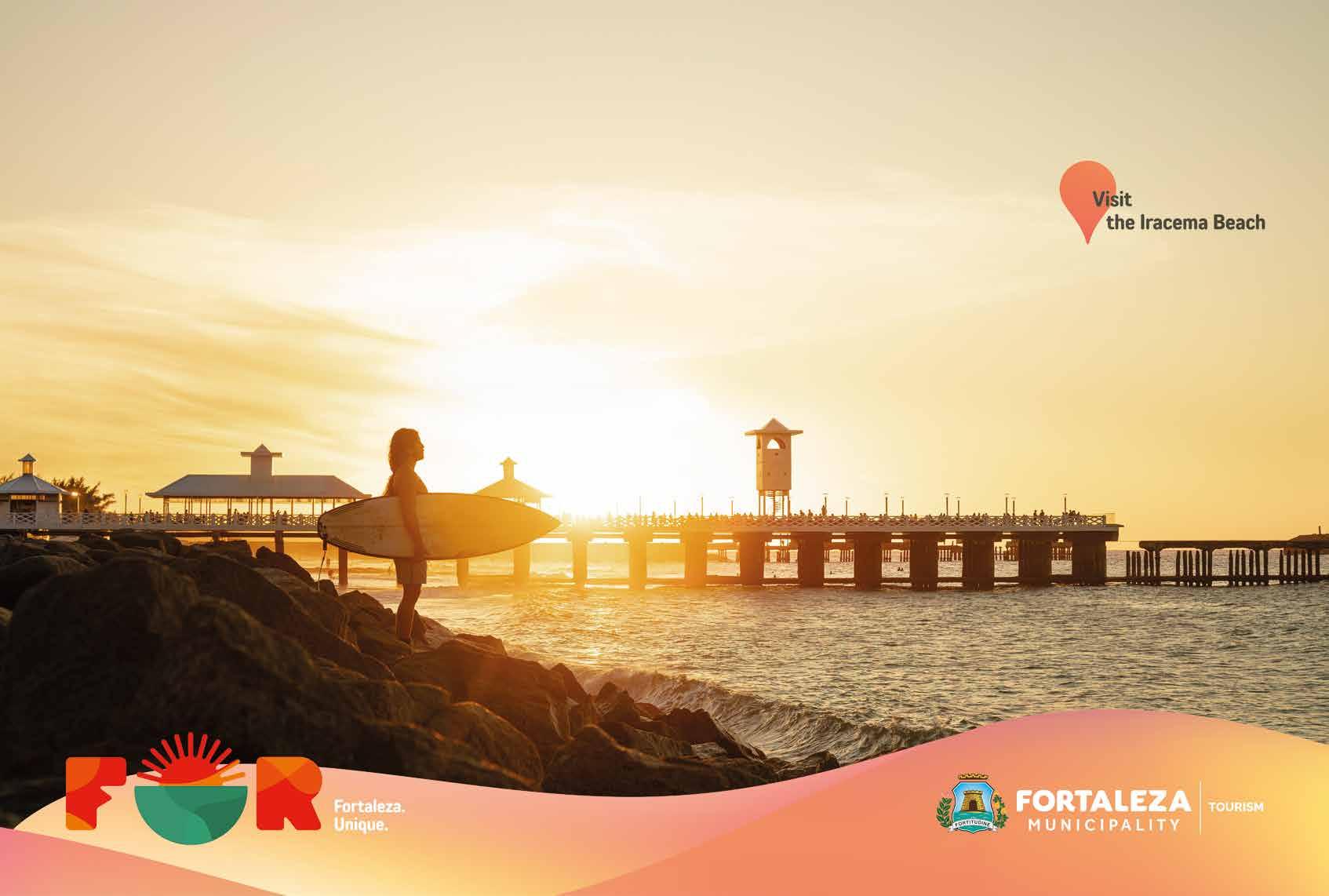

FROM GIANT PEACOCK BASS IN THE AMAZON TO MARLINS OFF THE COAST OF BAHIA, A NEW SURVEY HIGHLIGHTS BRAZIL’S GROWING POTENTIAL AS A WORLD LEADER IN SPORT FISHING
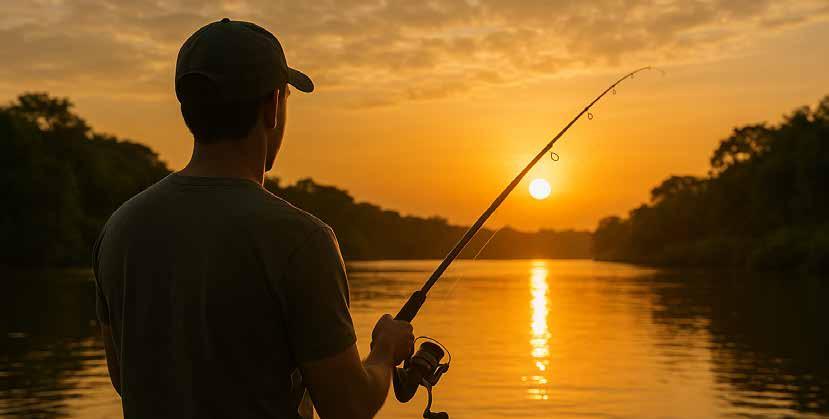
With one of the richest aquatic biodiversities on the planet - and an immense variety of rivers, lakes, and a vast coastline - Brazil stands out as a true paradise for sport fishing enthusiasts. The activity, which blends leisure, adventure, and environmental conservation, is one of the most promising segments of Brazilian tourism, driving local economies and promoting the sustainable development of destinations across all five regions of the country.
According to the Minister of Tourism, Celso Sabino, the results reaffirm the country’s exceptional potential.
“Sport fishing is one of our greatest assets in ecotourism. This survey confirms what we already know: Brazil’s poten-
A recent survey, based on data from Brazil’s Ministry of Tourism and the Brazilian Sport Fishing Confederation (CBPE), identified the ten most sought-after states for the activity, considering species diversity, infrastructure, and the organization of fishing events.
tial is unmatched. The Ministry of Tourism has been actively working to strengthen and promote this segment. Our goal is to establish Brazil as the world’s leading sport fishing destination, always combining the practice with sustainable development and the empowerment of local communities”, he said.
1. AMAZONAS:
Considered the cradle of the giant peacock bass (tucunaré-açu), one of the most sought-after species in the world, the state’s main hotspot is the city of Barcelos, located on the Rio Negro.
2. MATO GROSSO DO SUL:
The Pantanal, world-famous for its natural beauty, is the state’s main attraction. Species such as dourado, pintado, and pacu draw anglers to cities like Corumbá, the gateway to this unique ecosystem.
3. MATO GROSSO:
Combining the grandeur of the Pantanal with the Amazon Basin, this state offers an abundance of species like peacock bass and dourado and hosts the world’s largest sport fishing event - the International Sport Fishing Festival (FIPE) - in Cáceres.
4. GOIÁS:
An increasingly popular destination, known for the majestic Araguaia River and the vast Serra da Mesa Reservoir, both teeming with giant catfish like piraíba and pirarara, along with trophy-sized peacock bass.
5. TOCANTINS:
With the Tocantins and Araguaia Rivers, the state has become a rising destination for catching Amazon giants such as the blue peacock bass (tucunaré azul) and pirarucu, with major events held in its capital, Palmas.
6. BAHIA:
Internationally recognized, the state’s Atlantic coast ranks among the best offshore fishing spots in the world, especially around Canavieiras, famous for its big-game fishing of billfish species like marlin and sailfish.
7. SÃO PAULO:
Home to a vibrant fishing community, São Paulo offers a wide variety of freshwater experiences along the Tietê and Paraná rivers, as well as reservoirs filled with peacock bass, dourado, and freshwater drum (corvina).

8. PARÁ:
Located in the Amazon Basin, the state boasts vast areas for fishing, highlighted by the iconic Tucuruí Lake, one of Brazil’s most emblematic sites for catching large peacock bass.
9. MINAS GERAIS:
Known for its active tournament scene, Minas Gerais hosts fishing competitions across its lakes and reservoirs, attracting anglers from all over Brazil to destinations such as Três Marias and Iturama.
10. SANTA CATARINA:
With a rich coastline and scenic mountain rivers, the state is a top destination for saltwater species like snook (robalo), drawing enthusiasts to events such as the Robalo Master Brazil in Araranguá.


COME EXPERIENCE IT.

Brazil is more than a destination. It is a state of mind. A vibrant energy that pulsates from the soul of the country to the world! Come and enjoy unique, human and sensory experiences.
Visit our stand at WTM S5-222.

When talking about Brazil, the collective imagination often lights up to the sound of samba, the vibrant colors of Carnival, and the unmistakable passion for football. These images, without a doubt, are part of the Brazilian soul. But Brazil’s culture is a far broader, more diverse, and surprising organism. Beyond the stereotypes, there exists a mosaic of expressions, rhythms, flavors, and stories that reveal a nation in constant reinvention.
With continental dimensions and over 200 million inhabitants, Brazil hosts an impressive cultural diversity, resulting from the blending of indigenous peoples, Africans, Europeans, and migrants from all over the world. Each region
carries its own traditions: the North, shaped by Amazonian influence and the Bumba Meu Boi festivals; the Northeast, birthplace of rhythms like forró and maracatu, and a rich popular literary production; the South, with strong gaucho dances, Germanic influences, and unique folklore; the urban and multicultural Southeast, where bossa nova was born and where funk now pulses; and the Central-West, with sertanejo music and Pantanal traditions.
Brazilian music, for instance, is a borderless territory. From samba-canção to Tropicália, from MPB to electronic beats in the outskirts, the country’s sound directly reflects its social plurality. In Brazil, it is possible, in a
single weekend, to hear a choro trio, attend an alternative rock festival, enjoy a Bahian axé show, and witness a capoeira circle - and all of these events are, in their own way, profoundly Brazilian.
Literature also occupies a central place in this panorama. Writers like Machado de Assis, Jorge Amado, and Clarice Lispector shaped the country’s intellectual identity, while contemporary authors such as Conceição Evaristo, Itamar Vieira Junior, and Ailton Krenak give voice to historically silenced layers of society, addressing themes like ancestry, inequality, identity, and territory.
And then there is gastronomy, as diverse as the country’s accents: from Afro-Bahian acarajé to gaucho barbecue, from feijoada to tucupi. Each dish tells a story of heritage, encounters, and resilience. In markets, street festivals, and family homes, Brazil is celebrated through its food.
Discovering Brazil often means deconstructing preconceived ideas and finding new ‘Brasis’ around every corner, whether in a jongo circle in the interior of São Paulo, a carimbó performance in Pará, or a contemporary indigenous art exhibition in Brasília.
Yes, samba is contagious. Yes, football moves crowds. But Brazil’s true charm lies in its ability to bring together the ancestral and the modern, the erudite and the popular, the regional and the universal: everything at once, all with soul and abundant charisma.
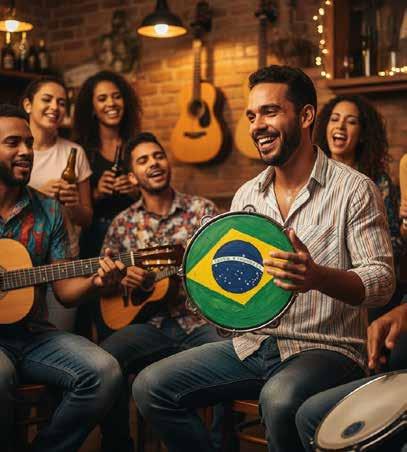
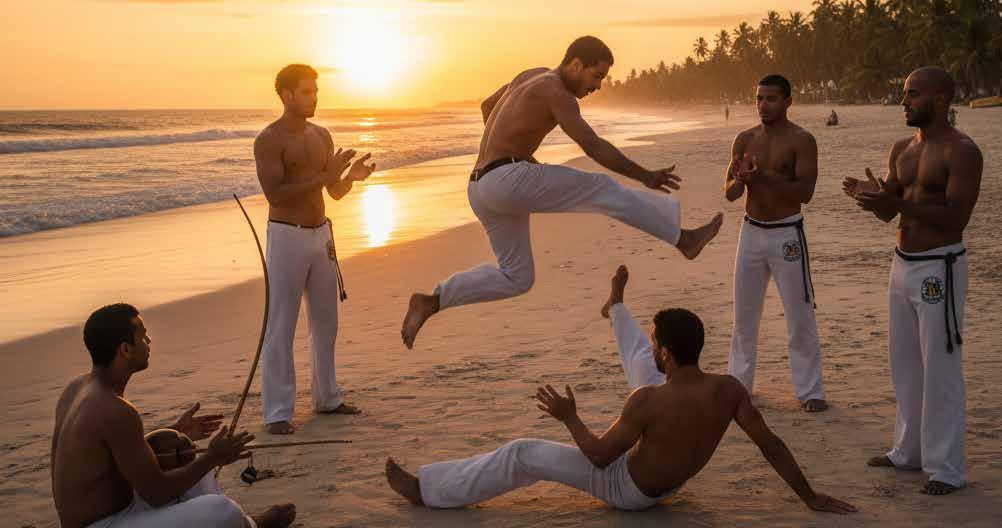

Located in the heart of Brazil, the Federal District stands out for its unique geography, blending the cerrado biome, with its distinctive fauna and flora, with the monumental architecture of Brasília and a vibrant cultural diversity that also shines through its gastronomy.
Brasília’s cuisine celebrates regional ingredients such as pequi, baru, and cagaita, gaining strength through projects that connect visitors to local traditions. This blend has made the capital a national reference in civic, religious, business, and cultural tourism - and increasingly in nature and gastronomy-based experiences.
Among its many attractions, the region’s tourist routes highlight its diversity. The Lago Oeste Route features rural properties open to visitors, offering agricultural experiences, adventure tourism, and outdoor leisure. In the PAD-DF area, the Wine Route draws travelers from around the world eager to explore cerrado viticulture, with tastings, wine tourism, and visits to award-winning local vineyards. These experiences complement the city’s iconic landmarks, such as Lake Paranoá, the Digital TV Tower, the JK Memorial, and the Metropolitan Cathe -
dral, together shaping Brasília as a multifaceted tourism hub.
But tourism in the Federal District extends far beyond the capital. Planaltina, one of the oldest towns in the region, is home to the Pedra Fundamental (Foundation Stone) and hosts the traditional Via Sacra do Morro da Capelinha, symbols of religious and historical tourism. In Brazlândia, festivals such as the Strawberry Festival and the Guava Festival attract thousands of visitors, strengthening rural and gastronomic tourism.
Sobradinho stands out for its proximity to green areas and natural parks, offering opportunities for ecotourism, while Ceilândia is recognized for its cultural vibrancy, marked by strong Northeastern influences, music, and traditional cuisine.
Together, Brasília and its neighboring cities form a mosaic of attractions that make the Federal District a complete destination: where modernity and tradition coexist harmoniously, driving the creative economy and establishing the region as one of Brazil’s leading tourism references.
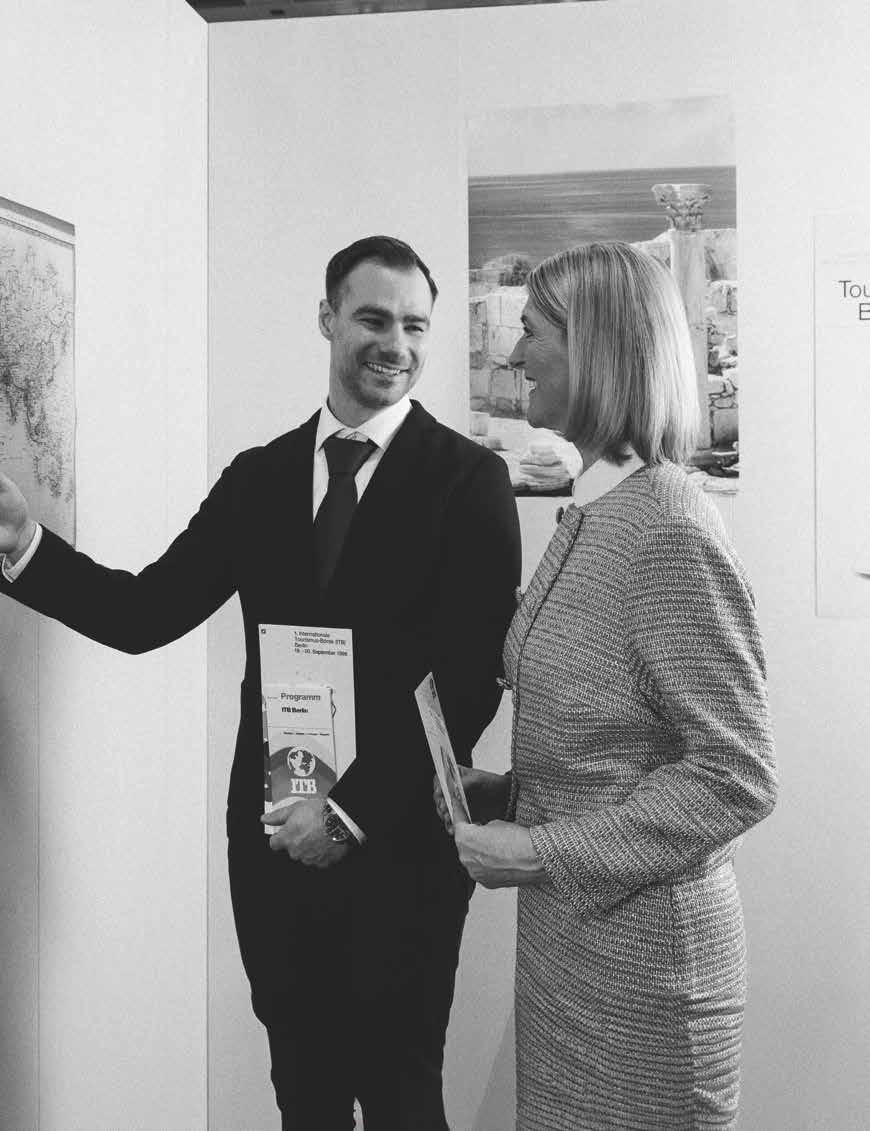










Located in the center of South America, Mato Grosso stands as a true showcase of natural and cultural diversity. From its capital, Cuiabá, travelers can access three of the planet’s most important biomes: the Pantanal, the Amazon Rainforest and the Cerrado, making it a privileged destination for nature lovers seeking authentic and immersive experiences.
Mato Grosso’s gastronomy reflects this diversity. Dishes such as mojica de pintado (fish stew), rice with pequi fruit and banana flour are deeply rooted in local tradition, complemented by vibrant cultural expressions that celebrate the state’s heritage and offer travelers a full sensory journey.
The state is an international reference for ecotourism and birdwatching. Of Brazil’s 1,818 registered bird species, 908 can be found in Mato Grosso, more than half of the national total, positioning it among the world’s top destinations for bird enthusiasts and participants of
events like the Global Big Day.
The Pantanal, the largest tropical wetland on Earth and a UNESCO World Heritage Site, reveals wildlife in its purest form. The sighting of the majestic jaguar — the region’s emblem — is one of the highlights of the “Brazilian safari.” Alongside it, species such as the hyacinth macaw, jabiru stork and roseate spoonbill create a spectacle of color and movement across the wetlands.
Mato Grosso’s Amazon region is equally captivating. In Alta Floresta, nearly 600 bird species have been recorded, including recent scientific discoveries. The Cerrado, on the other hand, offers striking landscapes, scenic trails and adventure tourism that balance exploration and contemplation of nature.
Another major highlight is Chapada dos Guimarães, known for its sandstone cliffs, waterfalls and panoramic viewpoints that showcase the vastness of the Cerrado. The National Park shelters over 250 bird species:
from the king vulture and ornate hawk-eagle to flocks of scarlet macaws that paint the skies red. Beyond birdwatching, the park attracts visitors seeking eco-hikes, open-air meditation and spiritual tourism.
Tourism in Mato Grosso has been growing steadily. In 2024, the state recorded a 19% increase in international arrivals, and Cuiabá ranks among Brazil’s ten most-booked destinations for 2025. Mato Grosso’s global presence is also reinforced through international fairs such as the Global BirdFair 2025 in the United Kingdom, as well as documentary projects and audiovisual productions that expand visibility for the Pantanal and its surrounding biomes.
With three globally significant ecosystems, expanding infrastructure, unique safari-style experiences and a rich cultural and gastronomic heritage, Mato Grosso is emerging as one of the most complete and promising destinations on the planet, offering tourism that is sustainable, immersive and transformative.
Located in the center of South America, Mato Grosso stands as a true showcase of natural and cultural diversity. From its capital, Cuiabá, travelers can access three of the planet’s most important biomes: the Pantanal, the Amazon Rainforest and the Cerrado, making it a privileged destination for nature lovers seeking authentic and immersive experiences.
Mato Grosso’s gastronomy reflects this diversity. Dishes such as mojica de pintado (fish stew), rice with pequi fruit and banana flour are deeply rooted in local tradition, complemented by vibrant cultural expressions that celebrate the state’s heritage and offer travelers a full sensory journey.
The state is an international reference for ecotourism and birdwatching. Of Brazil’s 1,818 registered bird species, 908 can be found in Mato Grosso, more than half of the national total, positioning it among the world’s top destinations for bird enthusiasts and participants of events like the Global Big Day.
The Pantanal, the largest tropical wetland on Earth and a UNESCO World Heritage Site, reveals wildlife in its purest form. The sighting of the majestic jaguar — the region’s emblem — is one of the highlights of the “Brazilian safari.” Alongside it, species such as the hyacinth macaw, jabiru stork and roseate spoonbill create a spectacle of color and movement across the wetlands.
Mato Grosso’s Amazon region is equally captivating. In Alta Floresta, nearly 600 bird species have been recorded, including recent scientific discoveries. The Cerrado, on the other hand, offers striking landscapes, scenic trails and adventure tourism that balance exploration and contemplation of nature.
Another major highlight is Chapada dos Guimarães,
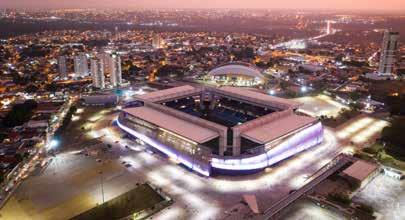
Cuiabá, the state capital, is the gateway to exploring the region’s natural wonders
known for its sandstone cliffs, waterfalls and panoramic viewpoints that showcase the vastness of the Cerrado. The National Park shelters over 250 bird species: from the king vulture and ornate hawk-eagle to flocks of scarlet macaws that paint the skies red. Beyond birdwatching, the park attracts visitors seeking eco-hikes, open-air meditation and spiritual tourism.
Tourism in Mato Grosso has been growing steadily. In 2024, the state recorded a 19% increase in international arrivals, and Cuiabá ranks among Brazil’s ten most-booked destinations for 2025. Mato Grosso’s global presence is also reinforced through international fairs such as the Global BirdFair 2025 in the United Kingdom, as well as documentary projects and audiovisual productions that expand visibility for the Pantanal and its surrounding biomes.
With three globally significant ecosystems, expanding infrastructure, unique safari-style experiences and a rich cultural and gastronomic heritage, Mato Grosso is emerging as one of the most complete and promising destinations on the planet, offering tourism that is sustainable, immersive and transformative.

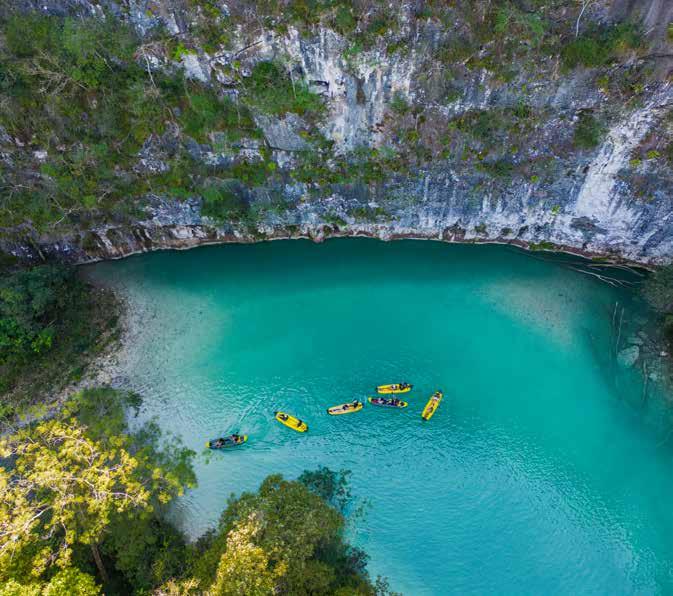
With crystalline rivers, flooded plains, and landscapes that change with the seasons, Mato Grosso do Sul has established itself as a global reference for ecotourism, nature, and adventure. Located in the heart of Brazil’s Central-West, bordering Bolivia and Paraguay, the state combines contemplation, adrenaline, and environmental awareness.
Bonito is the crown jewel of this vocation. Elected 18 times as Brazil’s top ecotourism destination, it was also recognized in London as the Best Responsible Tourism Destination in the World. It is the planet’s first carbon -
-neutral ecotourism destination. At the city’s Estância Mimosa, the property has been certified Climate Positive by the Green Initiative, reinforcing the state’s commitment to sustainability and responsible tourism.
The diversity extends to multicultural gastronomy. Sobá, of Okinawan origin, became intangible heritage in Campo Grande; tereré, influenced by Paraguayan culture, is a cultural heritage of MS and a staple at local gatherings. Freshwater fish dishes, beef, and even alligator showcase the richness of regional flavors.
The Pantanal is another giant of the state’s tourism.
Recognized as one of the world’s top wildlife-watching destinations, the region combines award-winning conservation projects with ranches that integrate production, tourism, and preservation. The Pantanal has been featured on international lists such as Time magazine’s World’s Greatest Places. The Bioparque Pantanal in Campo Grande is the world’s largest freshwater aquarium and a global reference. Visitors enjoy photographic safaris, birdwatching, sport fishing, and contemplative tours, while lodge-stays offer immersive experiences in Pantanal culture and cuisine.
In the Bonito and Serra da Bodoquena regions, nature takes center stage: transparent rivers reveal colorful fish schools, submerged caves enchant even experienced divers, and trails, waterfalls, and sinkholes complete the adventure. All activities follow the Safety Management System (SGS), with guides trained in aquatic rescue and first aid, including for visitors with reduced mobility.
Beyond the classic circuits, Mato Grosso do Sul holds lesser-known treasures. On the Cerrado-Pantanal Route, Alcinópolis impresses with rock engravings and natural parks. In Costa Rica, adventure is the name of the game, with zip lines, trails, and waterfalls. The Campo Grande dos Ipês area reveals a harmony between city and nature: tree-lined streets host birds and capybaras, and during the blooming season, yellow, pink, and purple ipês transform the landscape. Trails, waterfalls, and rappelling spots are just minutes from the city center.
Every corner of the state embodies the balance between tourism and preservation. From the Cerrado to crystal-clear waters, responsible management ensures a sustainable future. Visitors encounter a diversity of experiences in a single destination, blending adrenaline with contemplation.
Local culture enriches the journey. Traditions, hospitality, and flavors merge with abundant nature. Bonito, the Pantanal, Campo Grande, and the Cerrado form a mosaic of ecosystems, all guided by a sustainable vision of tourism. The result is an authentic and transformative experience. Those who visit Mato Grosso do Sul return changed: it is not just a destination, but a profound connection with nature, an invitation to slow down, observe, and be enchanted, whether floating in Bonito, photographing jaguars in the Pantanal, or walking among blooming Ipe trees (Handroanthus).
The message is clear: adventure and preservation can go hand in hand. Mato Grosso do Sul stands as an unmissable destination, ready to welcome the world with safety, beauty, and environmental awareness.

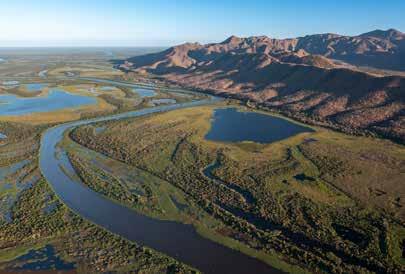
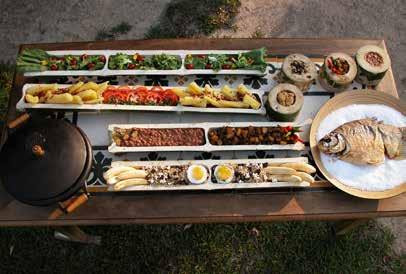

Alagoas is one of the most enchanting states in Brazil’s Northeast. With over 200 kilometers of coastline, it captivates visitors with its crystal-clear waters, coral reefs, colorful cliffs, and picturesque villages that seem frozen in time. Beyond its paradisiacal scenery, Alagoas is also a land of rich culture, deep-rooted traditions, and vibrant flavors that express the true essence of the
Northeastern soul. Whether to relax, experience local culture, or enjoy lively festivities, the state offers unforgettable experiences for every type of traveler.
The capital, Maceió, is a true haven for lovers of sun and sea. Protected by coral reefs, the city’s white-sand beaches and turquoise waters have earned it the nickname “the Brazilian Caribbean.” And it’s no exaggeration:
the resemblance to Caribbean destinations amazes even the most seasoned travelers.
At Pajuçara Beach, natural pools formed during low tide invite visitors to dive among colorful fish. Ponta Verde, framed by palm trees and lively beach bars, is ideal for water sports and leisurely strolls. But the showstopper is the famous Gunga Beach, where multicolored cliffs meet the calm waters of the river and the sea, a breathtaking natural spectacle that captivates everyone who visits.
Local gastronomy completes the experience. Fresh seafood, especially shrimp, takes center stage in Alagoas’ cuisine, alongside regional favorites like tapioca, couscous, charque (dried beef), and hearty root vegetables such as cassava, yam, and sweet potato. In Maceió, every meal feels like a celebration of Northeastern flavors.
Beyond the capital, the beauty of Alagoas unfolds in all directions. Known as the “Pearl of the Brazilian Caribbean,” Maragogi is one of the Northeast’s most sought-after destinations. Located along the Coral Coast, it’s home to warm, transparent waters, swaying coco -
nut trees, and stunning natural pools formed by reefs. A buggy ride is the best way to explore its beaches and uncover the region’s most striking viewpoints.
Part of the Ecological Route, São Miguel dos Milagres has captured the hearts of travelers seeking tranquility without giving up comfort. Its greenish waters, fine sand, and peaceful atmosphere create an almost untouched paradise. In recent years, the destination has also become famous for its exclusive New Year’s Eve celebrations, which have placed it firmly on the map of the Northeast’s most glamorous party spots.
More discreet but equally captivating, Japaratinga offers a charming escape for those looking to avoid the crowds. Its beaches, such as Bitingui and Pontal, feature postcard-perfect scenery: white sands, crystal-clear waters, and serene natural pools ideal for relaxation and connection with nature. The destination also stands out for offering an authentic and affordable travel experience, making it a favorite among visitors in search of beauty and simplicity in perfect balance.
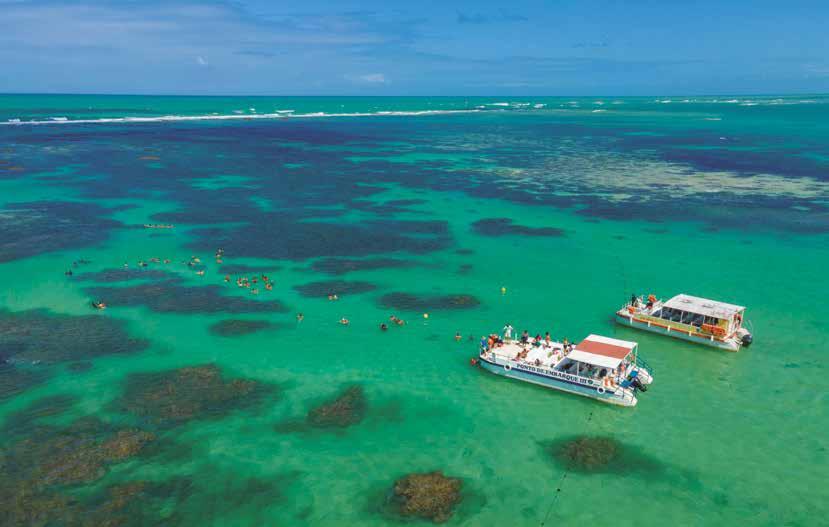
Shallow, warm, emerald-green waters are among the main attractions of Maragogi

Paraíba is a destination that captivates through its diversity. From the arid backlands to the golden beaches of the coast, the state combines stunning landscapes, a vibrant culture, rich cuisine, and warm hospitality. Known for preserving its traditions while embracing modernity, Paraíba offers a full range of experiences: from religious and historical tourism to outdoor adventures and seaside leisure. And at the heart of this mosaic of charm lies João Pessoa, its capital.
Known as the third-oldest capital in Brazil and celebrated for its peaceful atmosphere, João Pessoa has been gaining prominence on the national tourism scene. Located at the easternmost point of the Americas, the city is home
to Ponta do Seixas, where visitors can witness the first sunrise in the country, and on the entire continent.
Beyond its natural charm, João Pessoa is also one of the greenest capitals in Brazil and consistently ranks among the cities with the best quality of life. The balance between pristine beaches, rich cultural life, and the friendliness of its people makes it a perfect destination both for relaxation and for those seeking authentic cultural immersion.
Among the main attractions are its urban beaches: Tambaú, Cabo Branco, and Manaíra - which offer excellent tourist infrastructure, calm waters, and a tranquil ambiance. For those in search of more untouched settings, the beaches of Coqueirinho and Tambaba are true postcards of
Paraíba, with dramatic cliffs, rock formations, and a preserved natural landscape.
A must-see stop is the Cabo Branco Lighthouse, perched on a seaside cliff and offering one of the most iconic views of the city. Nearby stands the Cabo Branco Station of Science, Culture, and Arts, an architectural landmark designed by Oscar Niemeyer that has become a modern symbol of the capital.
The city’s history unfolds in its Old Town, where colonial-era buildings from the 16th and 17th centuries, such as the São Francisco Convent and the Church of São Frei Pedro Gonçalves, tell stories of faith and resilience. Walking through its narrow, colorful streets is like stepping back in time, immersed in a setting of culture and devotion.
Just a few kilometers from the capital, one of the sta-
te’s most enchanting experiences awaits at Jacaré Beach in Cabedelo. Every evening, hundreds gather to watch the sun set over the river to the sound of saxophonist Jurandy do Sax performing Bolero de Ravel, a tradition that has become a symbol of Paraíba’s unique spirit.
The local cuisine is another highlight. Dishes such as carne de sol with cassava, galinha de cabidela, and the beloved tapioca express the warmth and simplicity of Paraíba’s culinary roots.
With direct flights from Brazil’s major cities, João Pessoa stands out as a complete destination, a place where rest, history, culture, and gastronomy come together in perfect harmony. Those who visit leave with the feeling of having discovered an authentic and welcoming Brazil, a land of gentle surprises and genuine beauty.
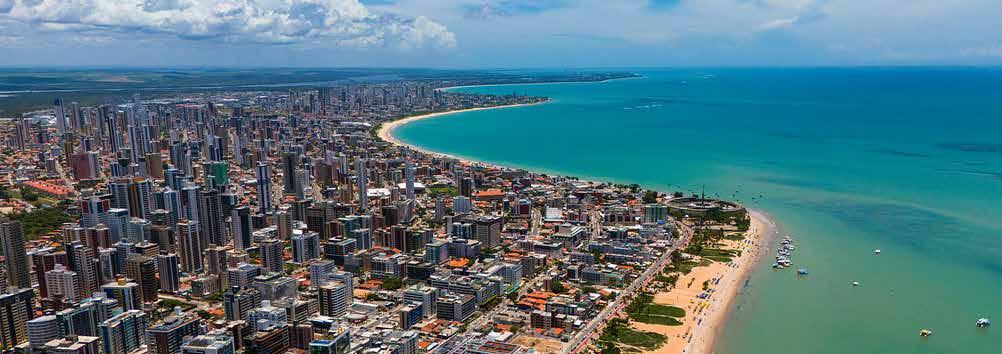


Located at the northeastern tip of South America, and closest to Europe, Rio Grande do Norte boasts a privileged coastline of nearly 400 kilometers, with paradisiacal beaches, warm crystal-clear waters, and sunshine all year round.
But the state goes far beyond the sea. Its mountains and sertão (backlands) surprise travelers who venture inland, revealing archaeological sites, caves, and breathtaking landscapes. Between contemplation and adventure, nature unfolds in all its diversity, offering generous and unforgettable experiences.
The same nature also powers the state, quite literally. Rio
Grande do Norte has a 100% renewable energy matrix, driven by the strength of its winds, which fuel the wind power sector and position the destination as a benchmark in sustainability. Those same winds attract athletes from around the world, making the state a true paradise for wind sports, from surfing to kitesurfing to paragliding.
To its stunning scenery are added a vibrant culture, irresistible cuisine, and the warm hospitality of a people proud of their land, who welcome visitors with generosity and joy.
Within a two-and-a-half-hour drive, travelers can live unforgettable experiences: a thrilling buggy ride over the dunes
of Genipabu, stand-up paddling at sunrise before the iconic Morro do Careca, swimming with dolphins in Pipa, tasting fresh oysters in Galinhos, kitesurfing over coral reefs in Rio do Fogo, diving in the crystal-clear waters of Maracajaú, watching a spectacular sunset in Tourinhos, or joining locals for samba at the traditional Segunda do Vagabundo. All of this supported by good roads, safety, and a high-quality hospitality and gastronomy network.
In the land of the world’s largest cashew tree, raising a caipirinha de caju is more than a toast, it’s a celebration of history, people, and ancestry.
In Rio Grande do Norte, every visitor becomes part of the destination and returns home with everlasting memories.



Pernambuco is one of Brazil’s most fascinating tourist destinations. A land where history, culture, gastronomy, and nature come together in a territory rich in identity and hospitality. From the coast to the highlands, from historic cities to vibrant festivals, there is always something new to discover in this lively and creative state.
Its capital, Recife, is dynamic and full of character. Known as the “Brazilian Venice” for its rivers and bridges, it preserves in the Recife Antigo district one of the most beautiful historic centers in the country, with centuries-old churches, grand colonial houses, and the emblematic Marco Zero Square. Museums such as Cais do Sertão and Paço do Frevo celebrate traditions that shape Pernambuco’s soul, while the artistic and musical scene constantly renews itself to the rhythm of frevo and manguebeat.
Right next to the capital lies Olinda, a UNESCO World Heritage Site. Its cobbled hills, baroque churches, and colorful colonial houses form a unique setting that comes even more alive during Carnival, one of the most famous in the world, with giant puppets, frevo, and maracatu parading through the narrow streets.
Along the coast, Pernambuco reveals breathtaking landscapes. Porto de Galinhas, in Ipojuca, is internationally renowned for its crystal-clear natural pools. In Tamandaré, Carneiros Beach offers serenity and postcard-worthy beauty. Further offshore, Fernando de Noronha stands as one of the most coveted ecotourism destinations on the planet, boasting extraordinary biodiversity and unforgettable experiences.
Inland, the state holds equally remarkable treasures. In
the Agreste region, Caruaru is known as the “Capital of Forró” and hosts the world’s largest Saint John’s Festival (Festa de São João), as well as the iconic Caruaru Fair, listed as Intangible Cultural Heritage of Brazil. In Gravatá, mild weather, fine gastronomy, and rural tourism attract visitors in search of charm and comfort.
In the Sertão, Petrolina stands out for its wines from the São Francisco Valley, where visitors can enjoy river cruises, wine tourism, and stunning scenery. The Catimbau Valley, in Buíque, captivates with its impressive rock formations and natural beauty. Other towns, such as Triunfo and Pesqueira, preserve the memory of sertanejo culture and popular religiosity.
Cultural diversity is Pernambuco’s signature. Frevo and maracatu are recognized by UNESCO as Intangible Heritage of Humanity, while rhythms like coco, ciranda, and caboclinho bring life to everyday moments. The state’s cuisine is equally expressive: bolo de rolo (rolled cake), tapioca, carne de sol, sarapatel, buchada, galinha à cabidela, and richly seasoned seafood dishes all reveal the creative essence of this land.
With Guararapes International Airport, the busiest in Northeastern Brazil, a growing hotel network, and a vocation for both leisure and business tourism, Pernambuco has established itself as one of Brazil’s most complete destinations. Whether exploring historic towns, discovering the sertão, dancing to the beat of frevo, or relaxing on paradise beaches, visitors will find in Pernambuco an authentic and unforgettable experience.

Bahia is a place made to enchant the world. Rich in culture, flavors, music, nature, and hospitality, the state unfolds into 13 tourist zones, each offering unique experiences: from crystal-clear seas to the deep hinterlands.
Everything begins in Salvador, the gateway to the state. Its warm beaches welcome visitors who also explore the Bay of All Saints and islands such as Itaparica and Frades. But it’s in the Historic Center, listed by UNESCO, that the city’s heart beats strongest. Among colonial mansions, baroque churches, and museums, you can breathe Brazil’s history. In Pelourinho, music echoes through the drums of Olodum and the processions of Filhos de Gandhy, turning the city into a permanent stage.
Following the Bay of All Saints, the Recôncavo region reveals surprises. Santo Amaro preserves colonial architecture and celebrates the Bembé do Mercado, an Afro-Brazilian festival. In Cachoeira, on the banks of the Paraguaçu River, the Independence of Bahia is remembered among centuries-old mansions and traditions such as the Festa da Boa Morte. São Félix keeps the cigar-making heritage alive, while Maragojipe blends boating, mangroves, and popular festivities.
On the Coconut Coast (Costa dos Coqueiros), the famous Praia do Forte draws visitors with the Tamar Project, natural pools, and the historic Garcia D’Ávila Castle. Guarajuba, Imbassaí, Sauípe, and Mangue Seco completes the route of paradise beaches. Along the Dendê Coast, Morro de São Paulo and Boipeba seduce with their rustic charm and unforgettable sunsets. On the Cocoa Coast (Costa do Cacau), Itacaré combines surfing, trails, waterfalls, and lively nights; Ilhéus preserves Jorge Amado’s literary legacy, and Maraú hides treasures such as Barra Grande.
Porto Seguro is the heart of the Discovery Coast (Costa do Descobrimento). Beyond its historical landmarks, districts like
Arraial D’Ajuda and Trancoso mix luxury and simplicity, while Caraíva maintains the charm of sandy streets and the magical meeting of river and sea. Further south, the Whale Coast (Costa das Baleias) is home to the Abrolhos Marine National Park, a diver’s paradise, with rare coral formations and the breeding grounds of humpback whales that visit the coast each year.
Inland, the Chapada Diamantina offers full immersion in nature. Trails, caves, waterfalls, and villages such as Lençóis and Mucugê invite visitors to disconnect from the modern world. Around the Lakes and Canyons of the São Francisco River, Paulo Afonso means adventure, with catamaran rides, stunning canyons, and stories of the cangaço bandits. The São Francisco Valley toasts travelers with wineries, river cruises aboard the Vapor do Vinho, and freshwater beaches in Juazeiro.
In the Western Paths (Caminhos do Oeste), Bom Jesus da Lapa is a destination of faith, while Barreiras and Luís Eduardo Magalhães showcase the strength of agribusiness. Ecotourism and adventure sports complete the experience in towns like São Desidério and Correntina. In the Jiquiriçá Paths, rivers, waterfalls, and June festivities enliven Amargosa and Cruz das Almas, while Mutuípe invests in ecotourism and railway heritage. In the Southwest, Vitória da Conquista surprises with its cool climate and Winter Festival, while Iguaí enchants with dozens of waterfalls scattered across its natural landscapes. In the Sertão, Monte Santo moves pilgrims with its century-old Way of the Cross, and Canudos preserves the memory of Antônio Conselheiro’s resistance in museums, parks, and viewpoints.
This is Bahia: multiple, diverse, vibrant. A destination that unites past and present, faith and celebration, simplicity and sophistication. A state too vast for a single trip, but one that always finds a place in the heart of those who visit.
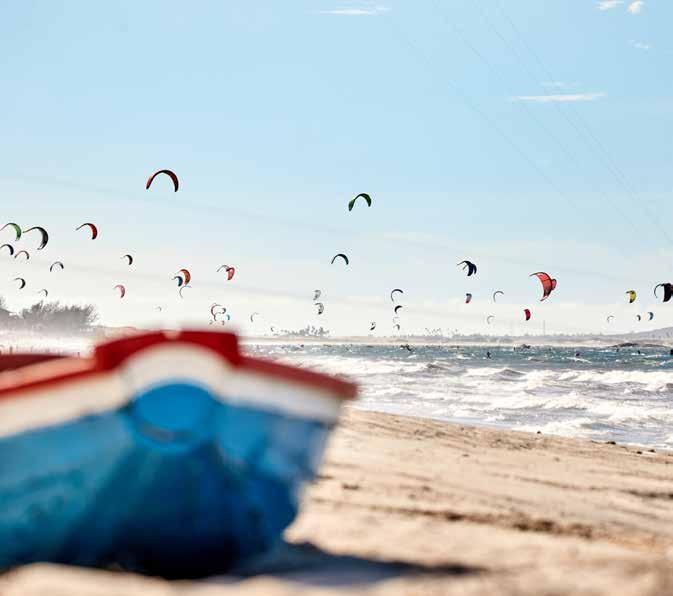
Ceará is a land of contrasts and wonders, located in the heart of Northeastern Brazil and bathed by more than 570 kilometers of coastline. Blessed with sunshine almost all year round, its geography unfolds between the vast sertão (backlands), lush green highlands, and a coastline framed by dunes, cliffs, and paradisiacal beaches that have become world-famous postcards. This natural diversity is reflected in the culture and lifestyle of the cearense people: joyful, welcoming, and resilient, who turn the aridity of the semi-arid into beauty and strength.
Fortaleza, the state capital, is the main gateway to Ceará
and one of the most visited destinations in Brazil. Modern and vibrant, it offers major hotels, convention centers, lively nightlife, and a bustling beachfront. Yet it also preserves tradition in its craft markets and the Central Market, where visitors can find hammocks, lacework, embroidery, and authentic local flavors. Its urban beaches: Iracema, Meireles, and Mucuripe, are perfect settings for both locals and travelers, who gather to watch the sun set over the ocean.
Beyond the coast, the interior of Ceará reveals unique landscapes and experiences. Jericoacoara, considered one of the most beautiful beaches in the world, enchants with its
crystal-clear waters, ever-shifting dunes, and the iconic Pedra Furada, an arch-shaped structure at Canoa Quebrada, a place that blends colorful cliffs, deep-blue sea, and a bohemian, charming atmosphere. In the highlands, the Ubajara National Park, in the Ibiapaba region, invites visitors to explore trails, caves, and elevated landscapes in a pleasant mountain climate, while Guaramiranga, known as the “Cearense Switzerland”, offers tranquility amid waterfalls, cultural festivals, and cozy weather.
The Cariri region beats one of Brazil’s greatest spiritual heritages. Juazeiro do Norte, the center of religious tourism in the Northeast, welcomes millions of pilgrims devoted to Padre Cícero. Together with Crato and Barbalha, it forms a cultural hub rich in faith, handicrafts, folk traditions, and the natural beauty of the Araripe Plateau. Other towns, such as Sobral, with its historical and musical heritage and Quixadá, famous for its rock formations and adventure settings, complete Ceará’s vast mosaic of experiences.
Ceará’s gastronomy is a story in itself: from baião de dois and carne de sol with queijo coalho, to hearty inland stews and sweet rapadura, to fresh fish and seafood from the coast, a creative and flavorful reflection of the state’s identity.
Ceará is, therefore, a complete destination, uniting sun and sea, culture and faith, adventure and serenity. It is a state that welcomes with warmth and offers experiences that go far beyond the landscape. Traveling through its lands is to discover a place that lives its traditions intensely while looking forward to the future, with tourism that is increasingly structured, sustainable, and connected to the world.
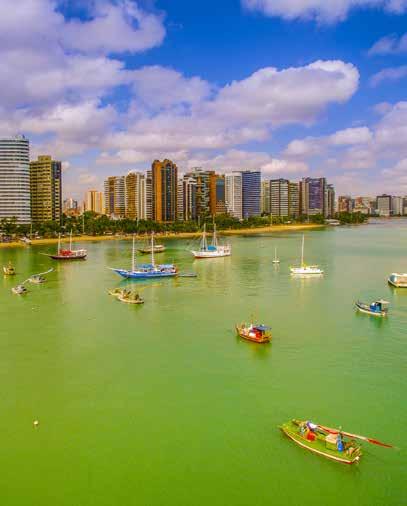
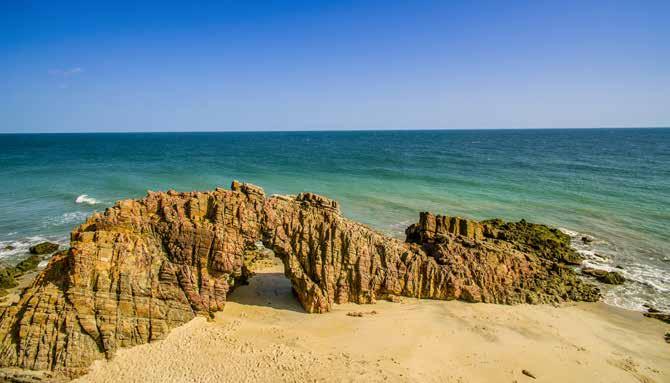

Maranhão is one of Brazil’s most diverse and captivating states. Located in the country’s Northeast and part of the Legal Amazon region, it combines lush nature, fascinating culture, and a distinctive cuisine. Home to the greatest variety of ecosystems in Brazil, the state attracts travelers seeking authentic experiences and breathtaking itineraries.
Three of its most iconic symbols have been recognized by UNESCO: São Luís, as a Cultural Heritage of Humanity; the Lençóis Maranhenses, as a Natural Heritage Site; and Bumba Meu Boi, as Intangible Cultural Heritage.
With 640 kilometers of pristine coastline, Maranhão has the second-longest coastal stretch in Brazil and hosts the largest mangrove ecosystem in Latin America. Inland, the Cerrado Maranhense stands out for its rich fauna and flora, as well as its waterfalls and scenic landscapes. In the south of the state, the Chapada das Mesas National Park impresses with its deep pools, rocky cliffs, and striking mountains: a perfect setting for travelers seeking both adventure and contemplation.
On the northern coast lies the vast Delta das Américas, an archipelago shared with the state of Piauí,
where about 70% of its islands are within Maranhão’s territory. Towns such as Araioses, Tutóia, and Paulino Neves are part of this route, where one of the highlights is witnessing the spectacular flight of the scarlet ibises at sunset - a natural show that deeply moves visitors. This region is part of the award-winning Route of Emotions, which connects Maranhão, Piauí, and Ceará in one of Brazil’s most sought-after tourist circuits.
The capital city, São Luís, is a cultural gem. Founded by the French and later colonized by the Portuguese, it was declared a UNESCO World Heritage Site in 1997. Its more than 4,000 listed buildings form a living mosaic of cobblestone streets, alleys, and stairways that host popular festivals, open-air markets, restaurants, and theaters. In the coming years, the city will welcome new international hotels, further strengthening its tourism potential.
Among the state’s most famous landmarks are the Lençóis Maranhenses, a stunning 155,000-hectare national park of sand dunes and crystal-clear lagoons
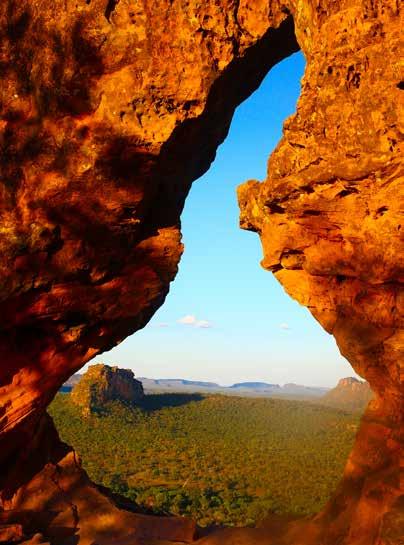
formed by seasonal rains. It is one of the most awe-inspiring natural destinations on the planet. Beyond admiring its surreal landscapes, visitors can enjoy sports such as kitesurfing, kayaking, and trekking, blending adventure and nature in perfect harmony.
Another treasure is Alcântara, the first Amazonian city ever declared a protected heritage site in Brazil, where colonial ruins coexist with living cultural traditions. Nearby, the Floresta dos Guarás marks the beginning of the Amazonian region of Maranhão: a sanctuary of mangroves, birds, and untouched beaches, including the serene and stunning Araoca Beach. With so many attractions, Maranhão has established itself as one of Brazil’s premier tourist destinations. With expanding hospitality infrastructure and high-quality services, the state offers a unique combination of nature, culture, and warmth. Those who visit Maranhão take home unforgettable memories, and the irresistible desire to return.
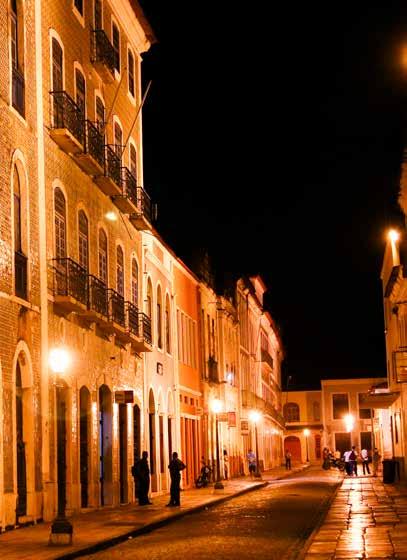

Located in southeastern Brazil, the State of São Paulo is defined by its diversity. Its capital is a multifaceted metropolis that, while serving as Brazil’s most important economic hub, is also the cultural capital of Latin America, offering an unparalleled range of leisure, knowledge, and entertainment options. It is a typically urban city, yet covered by vast green areas.
A city that pulses with diversity, São Paulo also boasts a vibrant calendar of events offering endless experiences. It is the only city in South America to host the Formula 1 Grand Prix at the Interlagos Circuit, and one of the few in the world to
feature a Sprint Race. The entertainment scene also includes two iconic music festivals on its calendar: Lollapalooza and The Town.
Beyond the capital, the countryside reveals stunning contrasts: from the canyons of Itararé to the waterfalls of Eldorado, the river beaches of Rifaina, and the so-called pantaninho paulista (São Paulo’s little wetland) in Ibitinga. Along the coast, visitors find an extensive stretch of preserved Atlantic Forest, offering spectacular scenery, pristine beaches, birdwatching, and immersive nature experiences.
Paulista gastronomy is a world of its own. The Government
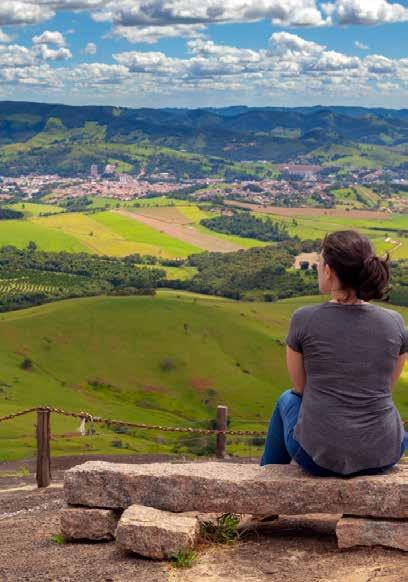

of São Paulo, through its Department of Tourism and Travel (Setur-SP), created Sabor de São Paulo, the state’s largest program dedicated to promoting local cuisine. The initiative maps Gastronomic Routes throughout the state, highlighting artisanal producers and restaurants across 35 tourist regions. Among the most famous dishes are virado à paulista (a traditional rice and bean dish with pork and fried egg), cupim casqueirado from Araçatuba (a slow-roasted beef hump with crispy crust), artisanal sweets from towns like Tatuí and Paraibuna, and afogado (a beef stew served with potatoes and manioc flour), a signature dish of the Festa do Divino Espírito Santo, especially in Mogi das Cruzes and São Luiz do Paraitinga. The state is also known for its award-winning coffees, among many other delicacies.
Some of the main destinations in the countryside include Aparecida, home to the National Shrine of Our Lady Aparecida, the largest Marian shrine in the world; Brotas and Socor-
ro, renowned for adventure and ecotourism activities such as rafting and rappelling; and the charming mountain towns of Campos do Jordão, São Bento do Sapucaí, and Santo Antônio do Pinhal, known for their cool climate, excellent cuisine, and boutique wineries open for visitation. Caconde and Espírito Santo do Pinhal stand out for their award-winning coffee and wine production amid stunning landscapes.
Leisure and fun are also central to São Paulo’s appeal. In Olímpia, for example, visitors can enjoy thermal waters and major water parks such as Thermas dos Laranjais, the largest in Latin America and Hot Beach. In Itupeva, Hopi Hari, the continent’s largest amusement park, guarantees thrills for all ages. Meanwhile, Atibaia invites visitors to relax, connect with nature, and take part in traditional events such as the annual Strawberry and Flower Festival, a local favorite that celebrates the region’s bounty and beauty
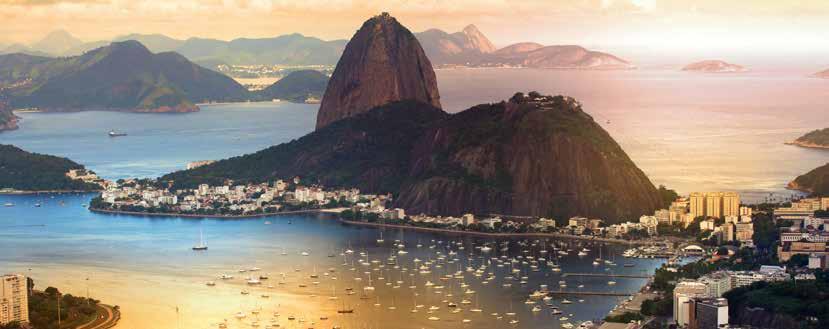
Rio de Janeiro is one of Brazil’s most iconic states, internationally renowned for its natural beauty, vibrant culture, and warm hospitality that captivates visitors from around the globe. Framed by mountains, sea, and forest, the state offers unique experiences that range from sun-and-sea tourism to ecotourism, from lively nightlife to encounters with history and cultural heritage. It is no wonder Rio remains one of the most desired destinations on the planet.
The city of Rio de Janeiro, which shares the same name as the state, is both its gateway and its postcard. Famous for beaches such as Copacabana, Ipanema, and Barra da Tijuca, the capital breathes sun, sea, and effortless joy. For surfers, Arpoador Beach is a must-stop - here, the sunset seen from the rock of the same name is a spectacle in itself.
Beyond its natural landscapes, the city’s landmarks highlight its grandeur. Christ the Redeemer, atop Corcovado Mountain, and Sugarloaf, reached by cable cars, offer views that remain etched in memory. The Lapa district comes alive at night with music and bohemian energy, while Santa Teresa enchants visitors with its artistic atmosphere and charming streets.
Those seeking culture and sports will find plenty to explore: from the Maracanã Stadium, Brazil’s football temple, to Porto Maravilha, revitalized to host major attractions such as the Museum of Tomorrow and AquaRio, Latin America’s largest aquarium.
Explore beyond the capital. Armação dos Búzios is one of the most celebrated gems of the Região dos Lagos (Lakes Region) and a favorite among international travelers. On a peninsula barely 8 kilometers long, the town gathers no fewer than 23 beaches, many ranked among the most beautiful in the state. Highlights include Geribá, João Fernandes, Ferradura, Tartaruga, and Brava, as well as Olho-de-Boi, known for its naturist tradition. The city’s cosmopolitan flair blends harmoniously with the welcoming atmosphere of a fishing village.
Arraial do Cabo also stuns visitors with its crystal-clear waters and white sands. Located in the same region, the city offers boat tours to breathtaking sights such as Pontal do Atalaia, the Blue Grotto, and stunning beaches like Praia do Farol, Forno, Prainha, and Praia Grande. It is the perfect destination both for relaxation and adventure, whether diving or hiking along scenic trails.
In the mountains, Petrópolis preserves an imperial charm and a deep sense of history. Founded by Emperor Dom Pedro II, the city boasts landmarks such as the Imperial Museum, St. Peter of Alcântara Cathedral, the Crystal Palace, Quitandinha Palace, and Santos Dumont’s House. Beyond its heritage, the district of Itaipava stands out for its refined gastronomy and craft breweries, making the region a complete route for culture, flavor, and leisure.

Minas Gerais is where heritage, creativity, and nature meet. With ten UNESCO recognitions, the state invites travelers to experience a journey that blends world history, authentic flavors, and vast natural landscapes, always accompanied by the warm hospitality of its people.
Five World Heritage gems form the backbone of any itinerary: Ouro Preto, Congonhas, Diamantina, and the Modern Ensemble of Pampulha in Belo Horizonte, as well as the Peruaçu River Canyon, inscribed in 2025 as a natural heritage site.
Culture here can also be tasted. In 2024, UNESCO added the Modes of Making Queijo Minas Artesanal (Artisanal Minas Cheese-Making) to the Intangible Cultural Heritage of Humanity list, recognizing the families who transform their terroir into identity and experience.
There are ten certified regions producing Queijo Minas Artesanal, each with distinct natural characteristics that directly influence the flavor and texture of the cheese: Serro, Serra do Salitre, Araxá, Campos das Vertentes, Canastra, Cerrado, Diamantina, Entre Serras da Piedade ao Caraça, Serras de Ibitipoca, and Triângulo Mineiro. Exploring these cheese territories is a true journey through the authentic flavors of Mina’s culture.
Nature frames every journey. Recognized by UNESCO as a Biosphere Reserve, the Serra do Espinhaço protects campos rupestres (rocky highland fields), waterfalls, and springs that feed the São Francisco and Jequitinhonha rivers; while the Atlantic Forest Biosphere Reserve preserves remnants of one of the planet’s most biodiverse ecosystems. At the heart of the Espinhaço, around Diamantina, the Sempre-Vivas National Park reveals high-altitude trails, unique blooms, and historic villages.
More than mountains, the region unveils historic towns and surprising destinations, such as Ouro Preto, Serro, Grão Mogol, Conceição do Mato Dentro, and Botumirim, all offering authentic experiences in culture, mineira cuisine, and heartfelt hospitality. Among canyons, rivers, lakes, and waterfalls, visitors find breathtaking trails for all levels, experiencing unforgettable adventures amid the grandeur of nature and the rich cultural heritage of Minas Gerais.
Minas is also a living laboratory of geoscience. The Uberaba Geopark, Land of Giants, presents world-class paleontological sites, museums, and educational experiences, from dinosaur fossils to geotourism routes through the Cerrado mineiro.
In its cities, tradition and modernity walk hand in hand. Belo Horizonte, the only UNESCO Creative City in Minas Gerais (gastronomy), offers bustling markets, traditional botecos (bars), and fine dining that reinterprets mineiro flavors, an ideal stop before or after exploring historical and natural circuits.
Modern yet welcoming, the capital blends art, culture, award-winning cuisine, and leisure in generous doses, providing a unique experience for all who visit. It invites exploration of landmarks such as Praça do Papa, Serra do Curral Park, and the Circuito Liberdade: Latin America’s largest cultural complex, integrating culture, tourism, knowledge, and creativity.
Cosmopolitan and plural, Belo Horizonte pulses with diversity in every sense. Its major events, from the vibrant street Carnival and Arraiá da Liberdade to the magic of Natal da Mineiridade (its Christmas), attract crowds and reinforce the city’s joyful, authentic spirit, always marked by the contagious hospitality of its people.

Paraná is one of Brazil’s most complete states when it comes to tourism. Located in the South of the country, it combines cultural diversity, rich gastronomy, and breathtaking landscapes, attracting visitors from all over the world. From the Atlantic coast to the vast green expanses of araucaria forests, Paraná surprises travelers with its natural beauty and the warmth of its people.
Curitiba, the capital, is a global reference in urban planning, sustainability, and quality of life. Its parks and museums, such as the Botanical Garden and the
Oscar Niemeyer Museum, are part of itineraries that blend nature, architecture, and culture. The city also captivates with creative cuisine, vibrant social life, and a welcoming spirit.
In the far west of the state, where Brazil, Argentina, and Paraguay meet, lies Foz do Iguaçu, one of Brazil’s most sought-after destinations. The city’s grand spectacle is the Iguaçu Falls, a set of 275 cascades stretching over 3 kilometers, forming the largest system of great waterfalls in the world. A show of strength and beauty from nature that forever marks those who witness it.
Foz do Iguaçu combines adventure, nature, and culture in iconic attractions. Itaipu Binacional, the world’s largest producer of clean energy, offers panoramic tours and unique experiences. The Bird Park (Parque das Aves) provides unforgettable encounters with over 150 species from across the globe. The city also boasts top-tier resorts and hotels with spas, pools, restaurants, and entertainment, making it a complete destination for the whole family.
The Paraná coastline is a paradise of 125 beaches with white sands and crystal-clear waters, perfect for relaxation or adventure. Among its jewels is Ilha do Mel (‘Honey’ Island), with untouched beaches, scenic trails, the Conchas Lighthouse, and the Nossa Senhora dos Prazeres Fortress - all part of an unforgettable experience. The historic cities of Paranaguá and Morretes charm visitors with colonial architecture, traditional cuisine, and unique tours such as the scenic train
ride through the Serra do Mar mountains. For adventure lovers, there are trails, rafting, canoeing, and climbing opportunities amid the exuberant Atlantic Forest. As night falls, bars, bistros, and boat tours reveal the region’s lively and welcoming side.
Inland, other cities stand out. Londrina, known as the “Coffee Capital,” blends historical memory, lakes, parks, and a vibrant cultural agenda. Maringá, with its futuristic cathedral and vast green spaces, is a reference for religious and event tourism. Ponta Grossa impresses with Vila Velha State Park, where rocky formations resemble natural sculptures, completing landscapes perfect for adventure and exploration.
Paraná is, therefore, a multifaceted destination: a place where nature thrives, culture pulses, gastronomy delights, and tourism infrastructure meets excellence. A state that offers unique experiences at every turn and leaves visitors with the lasting desire to return.
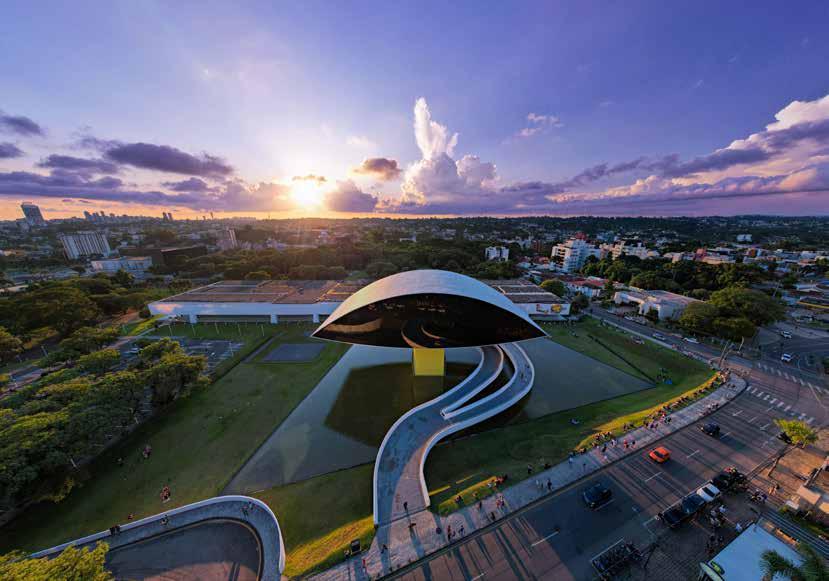

Bordering Argentina and nestled between Paraná and Rio Grande do Sul, Santa Catarina carries a strong European heritage, shaped by German, Italian, Polish, Ukrainian, and Portuguese immigrants who influenced its culture, traditions, and way of living.
Its gastronomy reflects this diversity. Florianópolis, the state capital, has been designated a UNESCO Creative City of Gastronomy, thanks to its rich culinary culture that blends Açorian (Azorean), Indigenous, and immigrant influences into a unique flavor identity.
With more than 200 municipalities, Santa Catarina offers
attractions spread across multiple regions. Along the coast, the Costa Verde & Mar and the beaches of Greater Florianópolis enchant visitors year-round. The Serra Catarinense reveals high-altitude landscapes, while the Vale Europeu (European Valley) surprises with its German-colonized towns, fachwerk architecture, and traditional October festivals. In the Midwest and West regions, travelers can experience Austrian culture in Treze Tílias, the thermal waters of Piratuba, and the impressive Caminhos dos Canyons (Canyon Trails). Religious tourism is also well represented across the state. In Joinville, Santa Catarina’s largest city, visitors find beaches, ecotourism, history,
and culture all in one place.
Each season brings its own unique charm. In summer, the coast takes center stage with more than 500 kilometers of beaches that attract visitors from Brazil and around the world. Autumn offers mild temperatures and golden landscapes, perfect for wine routes, mountain getaways, and exploring towns with European influence, a season to enjoy dishes made with pinhão (the local pine nut) and to embrace ecotourism and adventure travel.
Winter is magical: in towns like Urupema, Urubici, and São Joaquim, the intense cold and occasional snowfall turn the mountains into cozy retreats of fireplaces, wine tasting, romantic escapes, and heartwarming experiences. Spring, in turn, paints the state with colors and fragrances, inviting travelers to explore parks, gardens, and outdoor activities such as hiking, cycling, and rural tourism in destinations like Benedito Novo, São Martinho, and Doutor Pedrinho.
In every season, Santa Catarina is a land of relaxation, wonder, and unforgettable experiences. Between natural beauty, history, tradition, and a rich, diverse cuisine, the state captivates everyone who arrives, and always leaves them longing to return.



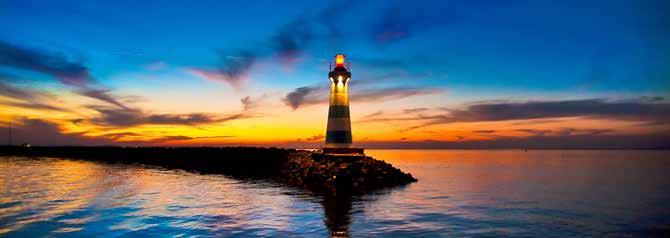
From coastal shores and rolling hills to vast pampas, the state’s landscapes are as varied as the peoples who have shaped its identity
Located at the southernmost tip of Brazil, Rio Grande do Sul stands out for its striking natural and cultural diversity. From coastal shores and rolling hills to vast pampas, the state’s landscapes are as varied as the peoples who have shaped its identity. Indigenous, Afro-Brazilian, Luso-Hispanic and European influences, particularly Italian, German and Polish, converge to form a rich mosaic that defines the soul of Rio Grande do Sul.
Land of barbecue, chimarrão (the traditional mate tea), award-winning wines and sparkling wines, and authentic regional sweets, Rio Grande do Sul offers a wealth of experiences ranging from rural tourism to creative urban escapes, welcoming visitors year-round.
The capital, Porto Alegre, captivates with its iconic sunsets over Lake Guaíba, lively cultural scene, urban parks and vibrant gastronomy. The renovated Guaíba Waterfront and the historic Gasometer Plant are now major landmarks, while the Public Market, Historic Center, museums and a busy event calendar make the city a strategic gateway to explore the state’s diverse tourist regions.
In the Serra Gaúcha mountains, Gramado and Canela boast exemplary tourism infrastructure, complete hospitality and attractions for families and couples alike. The charming urban scenery, with its covered street, museums, cafés and chocolate shops, blends seamlessly with abundant nature, featuring parks, waterfalls and panoramic lookouts. The region is home to world-renowned events such as Natal Luz (Christmas of Lights), offering unforgettable experiences all year long.
Bento Gonçalves, in the Vale dos Vinhedos, is synonymous
with wine tourism. Visitors can enjoy guided tastings, vineyard tours and breathtaking landscapes that change with every season. The region holds Brazil’s only official Indication of Origin and Denomination of Origin for wines and sparkling wines, a testament to its excellence and unique terroir.
Farther north, Cambará do Sul impresses with the Itaimbezinho and Fortaleza canyons, located within the Aparados da Serra and Serra Geral National Parks. With monumental cliffs, well-marked trails and cinematic views, the destination is an icon of ecotourism and adventure, complemented by charming lodges and regional cuisine.
In the northwest, São Miguel das Missões preserves a UNESCO World Heritage Site, the Jesuit ruins of São Miguel Arcanjo. The Guarani-Missioneira heritage, combined with light-and-sound shows and local museums, tells a profound story of cultural formation in southern Brazil.
Along the coast, Torres is known for its seaside cliffs, family-friendly beaches and major sports events. In the south, Pelotas charms visitors with its preserved architecture and celebrated confectionery traditions. Cities across the Pampa and Campanha regions, such as Bagé and Santana do Livramento, offer immersive rural experiences, cross-border wine tourism and binational shopping.
With excellent air connectivity, integrated routes and a robust tourism infrastructure, Rio Grande do Sul delivers complete travel experiences - culture and nature, cuisine and wine, creative cities and unforgettable landscapes - from the sunsets over Guaíba to the vineyards of the Serra Gaúcha and the historic ruins of the Missions.
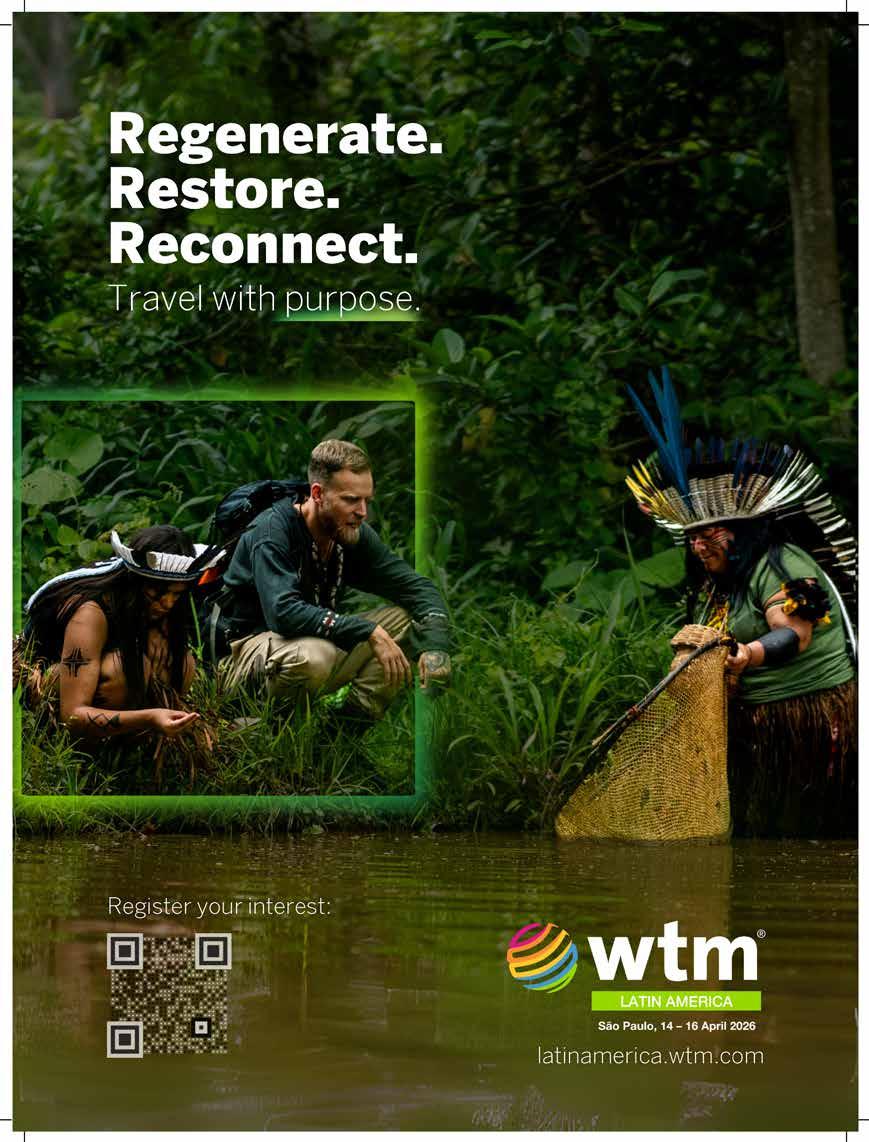

Flying directly from Lisbon to 13 destinations:
Rio de Janeiro · São Paulo · Salvador
Recife · Fortaleza · Brasília
Belo Horizonte · Maceió · Belém
Natal · Florianópolis · Manaus · Porto Alegre